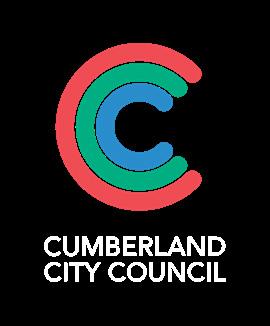




Cumberland Council acknowledges the Darug Nation and People as Traditional Custodians of the land on which the Cumberland Local Government Area (LGA) is situated and pays respect to Aboriginal Elders past, present and future.
We acknowledge Aboriginal and Torres Strait Islander Peoples as the First Peoples of Australia.
Cumberland Council also acknowledges other Aboriginal and Torres Strait Islander Peoples living in the Cumberland Local Government Area and reaffirms that we will work closely with all Aboriginal and Torres Strait Islander communities to advance reconciliation within the area.
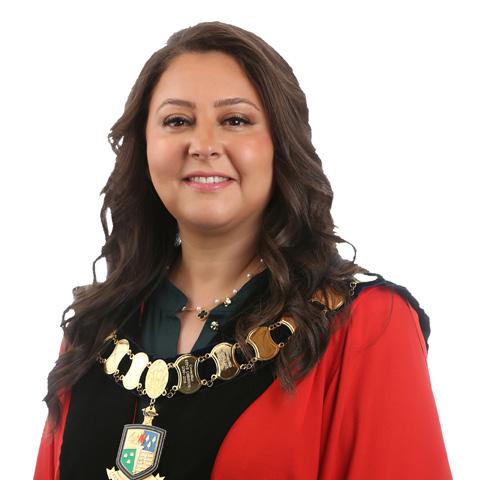
I am honoured to present the 2025-2035 Community Strategic Plan (CSP). This plan is much more than a document, it is a roadmap for the future, outlining the long term vision, priorities, and the strategies we will implement to achieve these goals over the next decade.
Cumberland City Council is committed to fostering an inclusive, engaged, and thriving community. We place great value on the needs and aspirations of our residents. With a population that is expected to grow around 300,000 people by 2036, it is crucial that we plan ahead to accommodate this growth, while preserving what makes Cumberland so rich and unique. By actively seeking input from the diverse and vibrant people who call Cumberland home, we have collaboratively shaped this vision to reflect what matters most to our community.
The CSP is unique because it is owned by you, the community. Through extensive engagement, we collected over 9,480 responses from residents to ensure that our plan is shaped by your insights, experiences, and needs.
We listened closely to your needs and priorities through extensive community consultations which identified key themes and challenges to be prioritised, ensuring Cumberland continues to grow and thrive. These include environmental sustainability, public safety, infrastructure and housing affordability. Additionally, there is a strong desire for a more vibrant local economy with a focus on retail, dining, and cultural opportunities that serve our growing population.
As leaders of this community, we recognise our critical role in civic leadership and hold ourselves accountable for driving the changes needed to address these challenges and improve the lives of our residents. While Council plays a central role in facilitating its development, the responsibility for its success will require a collective effort.
Over the next decade, we are committed to working and strengthening our relationships with private industry, state and federal governments, community groups, businesses, and residents to address these challenges. We will continue to advocate on behalf of Cumberland to ensure it is a safe, connected, inclusive and a united community, one that supports diverse businesses, fosters social wellbeing, and prioritises environmental sustainability.
Together, we are building a future that honours our shared values and strengthens the foundation of our great community.
Clr Ola Hamed Mayor
I am proud to present Cumberland City’s Community Strategic Plan (CSP) 2025-2035, a reflection of our collective ambition for the future. It is the product of extensive engagement with our community, and the contribution of your input into the strategy will significantly influence the trajectory of Cumberland.
We understand that the path to economic growth is most effective when it is shaped by those who live and work in our city, which is why community feedback is at the forefront of Council’s decision making. We are united in our mission to build a city that reflects our shared goals, strengths, and potential.
As we navigate the road ahead, we acknowledge that Cumberland faces strategic risks and challenges such as climate change, housing affordability, homelessness, family violence, infrastructure provision, and access to public transport.
To address these risks, we are committed to ensuring that Cumberland’s community resilience continues to be our main priority in our planning and response strategies. By actively participating in the Resilient Sydney Program, ensuring that Cumberland’s infrastructure is accessible and appealing, that community partnerships are supported, and that our services remain valuable and reliable, we are strengthening our capacity to survive, adapt, and thrive.
Moreso, this plan outlines the values and aspirations we hold for Cumberland and sets out a clear long-term (10+ years) vision for how we will achieve a vibrant, inclusive, and sustainable community. Our strategy is organised around four key strategic directions, each aimed at enhancing our social, environmental, economic, and civic leadership outcomes.
This Plan considers the existing residential and industrial mix in Cumberland and recognises the unique opportunities to enhance both land use and social infrastructure. As we explore medium and higherdensity development in key centres and transport
nodes, we aim to create a dynamic urban environment which is locally accessible, contributes to economic resilience and supports a 30-minute city that aligns with the Low and Mid-rise Housing reforms led by the NSW State Government.
The strategic location of our Council and the continued development of its employment hubs position us for significant growth in both jobs and housing. Our proximity to key metropolitan centres and critical infrastructure, opens doors for new opportunities in industries such as manufacturing, healthcare, education, and emerging sectors like creative industries and technology.
Our local economy, which provides over 87,000 jobs across more than 20,000 businesses, is evolving, with our young, educated workforce driving innovation.
As a Council, we hold our responsibility in high regard, and we are committed to delivering projects and programs that meet the current and future needs of our community. We will continue to partner and collaborate with relevant organisations, government agencies, businesses and community groups to achieve our shared objectives.
Looking ahead, we are striving to build an economy that works for all of Cumberland, creating a place where businesses thrive, residents prosper, and opportunities abound, while proactively addressing the strategic risks and challenges that may lie ahead.
I am confident that the trust you have placed in Council to build the future outlined in this Plan will deliver significant progress for our community, and I look forward to the realisation of these benefits in the coming years.
Peter J. Fitzgerald General Manager

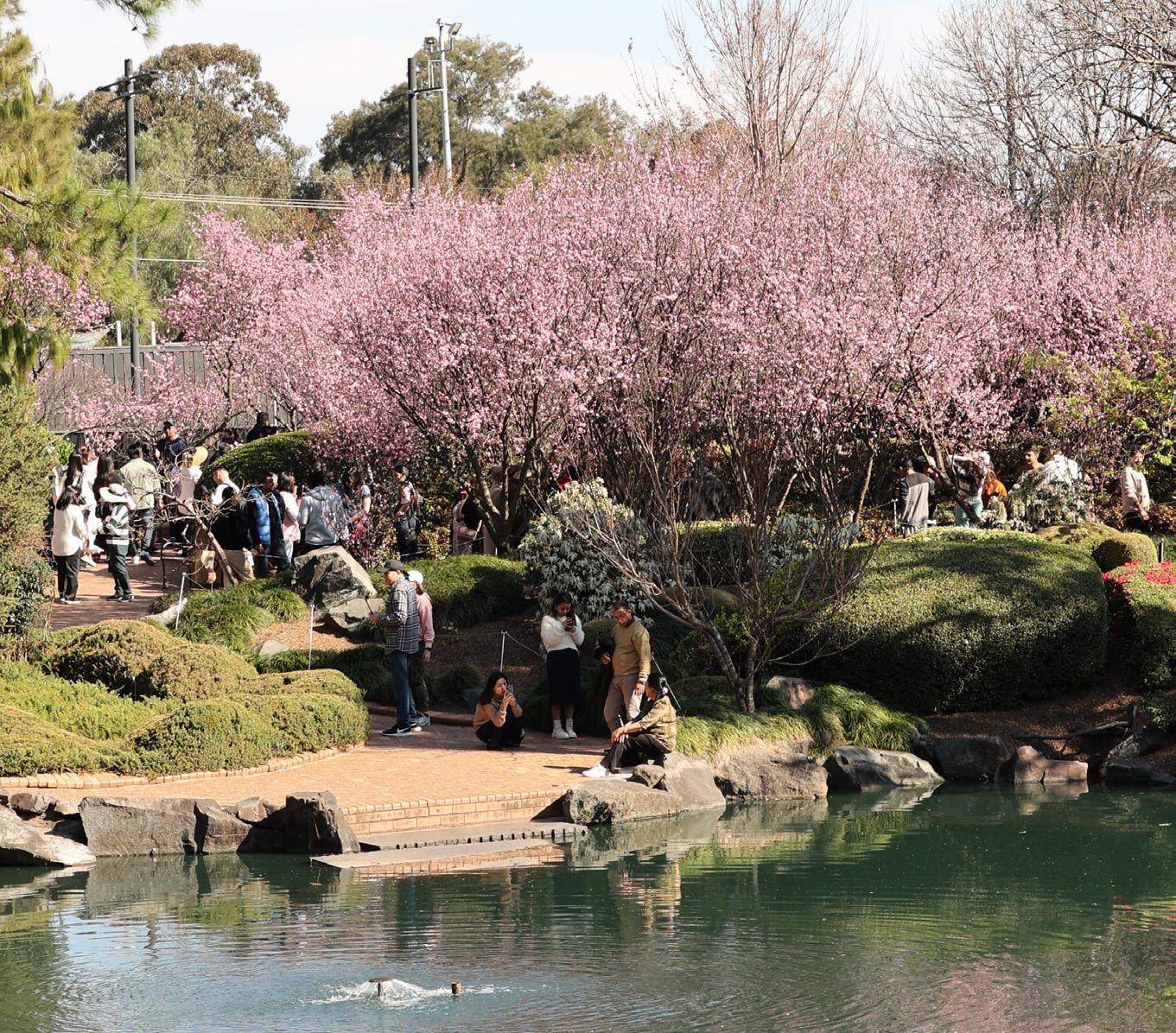

The Community Strategic Plan (CSP) is a high-level plan that sets the long term vision for the future of Cumberland, outlining the future hopes and aspirations of the community.
This plan is unique in that, while Council is responsible for facilitating the development of the CSP, it is owned by the community. Responsibility for the implementation and delivery of the CSP requires Council to partner with private industry, state and federal governments, community groups, businesses and residents. Council’s commitment to contributing to the CSP will be through its Delivery Program.
The Delivery Program is the elected Council’s response to the community’s priorities and aspirations.
Under the NSW Local Government Act 1993, councils are mandated to adopt a robust approach to planning and decision-making through the Integrated Planning and Reporting (IP&R) Framework. The IP&R Framework is central to all Council plans, guiding how councils provide leadership, plan for the future and make decisions about services and resources.
The framework emphasises that IP&R should be at the core of all Council plans, activities, resourcing decisions and improvement strategies. All councils in NSW use the IP&R framework to guide their planning and reporting activities. The framework provides a clear picture of the council’s direction and how it plans to achieve its goals, through various plans and strategies. These include the:
• Community Strategic Plan
• Resourcing Strategy
» Asset Management Strategy and Plans
» Workforce Management Strategy
» Long Term Financial Plan
» Digital Strategy (whilst not a requirement under the Local Government Act and Regulations, the development and adoption of a Digital Strategy is an invaluable part of Cumberland’s resource planning and is considered best practice)
• Delivery Program
• Operational Plan.
The IP&R framework of documents is designed to ensure that NSW councils are undertaking long term planning for the future of their communities and that planning is based on thorough community engagement. The framework is a cascading set of plans, strategies and reports designed to translate high level community hopes and aspirations into actionable activities for Council. Plans within the IP&R Framework ensure that Council activities are aligned with community priorities, are sustainably resourced and all progress is measured and reported.
The community is at the heart of the IP&R Framework, therefore Council values engagement with the Cumberland community to understand their priorities and vision for the future. Involving the community in each stage of the IP&R process ensures decision making is evidence based and representative of the views of the community. Council’s role in engagement is to:
• Inform
• Consult
• Involve
• Collaborate
• Empower.
Asset Management Strategy
Workforce Management Strategy
Digital Strategy
Resourcing Strategy
Demonstrates how work identified in the Delivery Program and Operational Plan will be resourced
Long Term Financial Plan
Highest level of strategic planning. All other plans must support achievements of Community Strategic Plan objectives
Delivery Program
Describes elected Council’s commitment to deliver against the Community Strategic Plan over a four-year term
Community Engagement Strategy
To support the development of all plans, policies, programs and key activities
Operational Plan
Identifies annual deliverables and actions to deliver against Delivery Program outcomes
State of our City Report
Report prepared by the outgoing Council to the community on the effectiveness of implementing the Community Strategic Plan
Reports back to the community on the work undertaken each year to deliver on the commitments of the Delivery Program and Operational Plan
Performance and Progress Report
Six-monthly reports that updates the community on the performance and progress of the commitments outlined in the annual Operational Plan
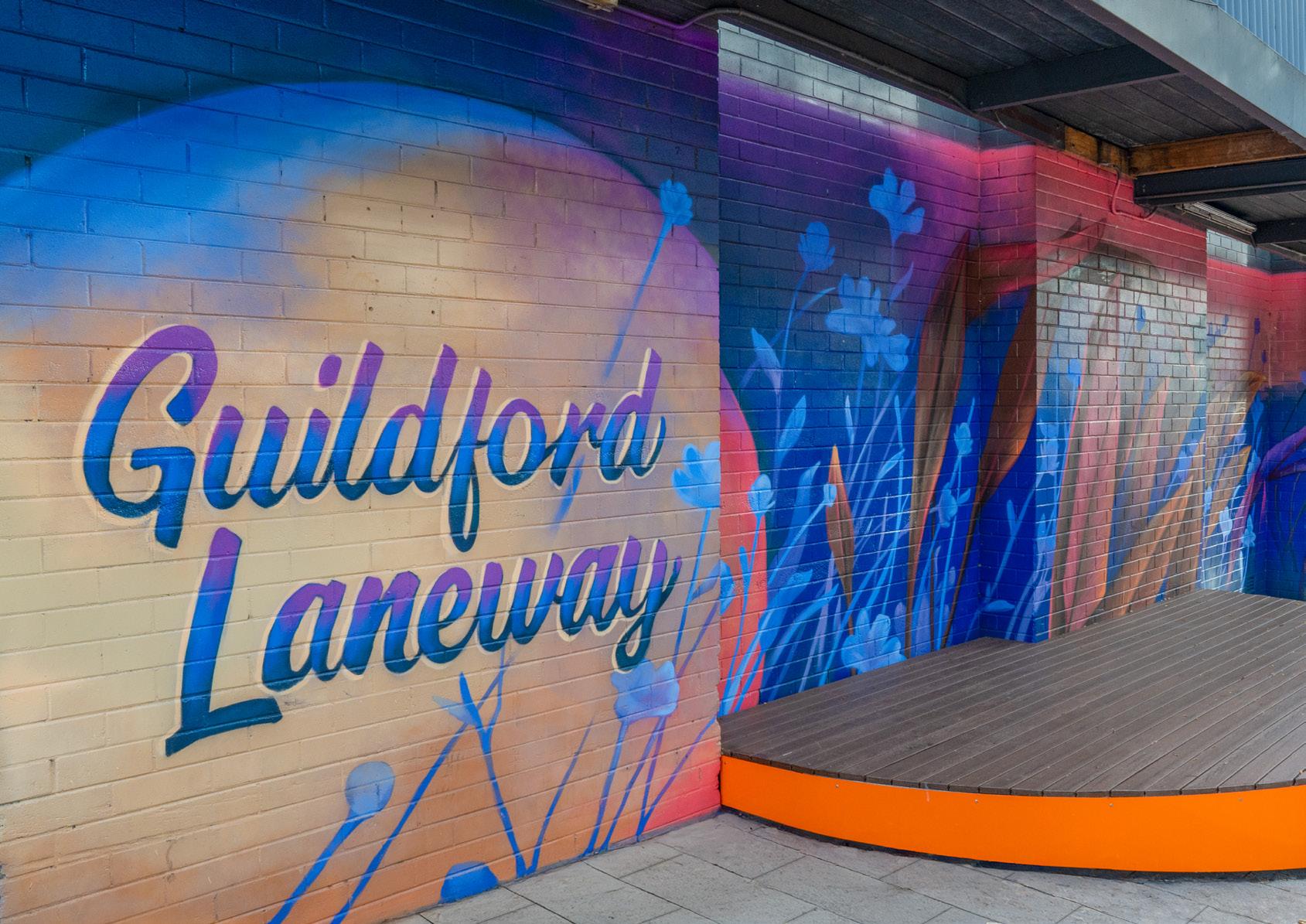
The purpose of the Community Strategic Plan (CSP) is to identify the community’s main priorities and aspirations for the future and to plan strategies to achieve them. It guides all remaining strategies and plans and must address the questions:
1. Where are we now?
2. Where do we want to be in 10 years’ time?
3. How will we get there?
4. How will we know when we have arrived?
The key elements of the Community Strategic Plan 2025-2035 fulfil Council’s obligations under the Integrated Planning and Reporting (IP&R) framework by:
• Taking a long term outlook covering a 10 year period
• Establishing strategic objectives together with strategies to achieve them
• Equally address social, environmental, economic and civic leadership issues
• Having a strong foundation in social justice principles of equity, access, participation and rights
• Aligning to and referencing other relevant state and regional plans.
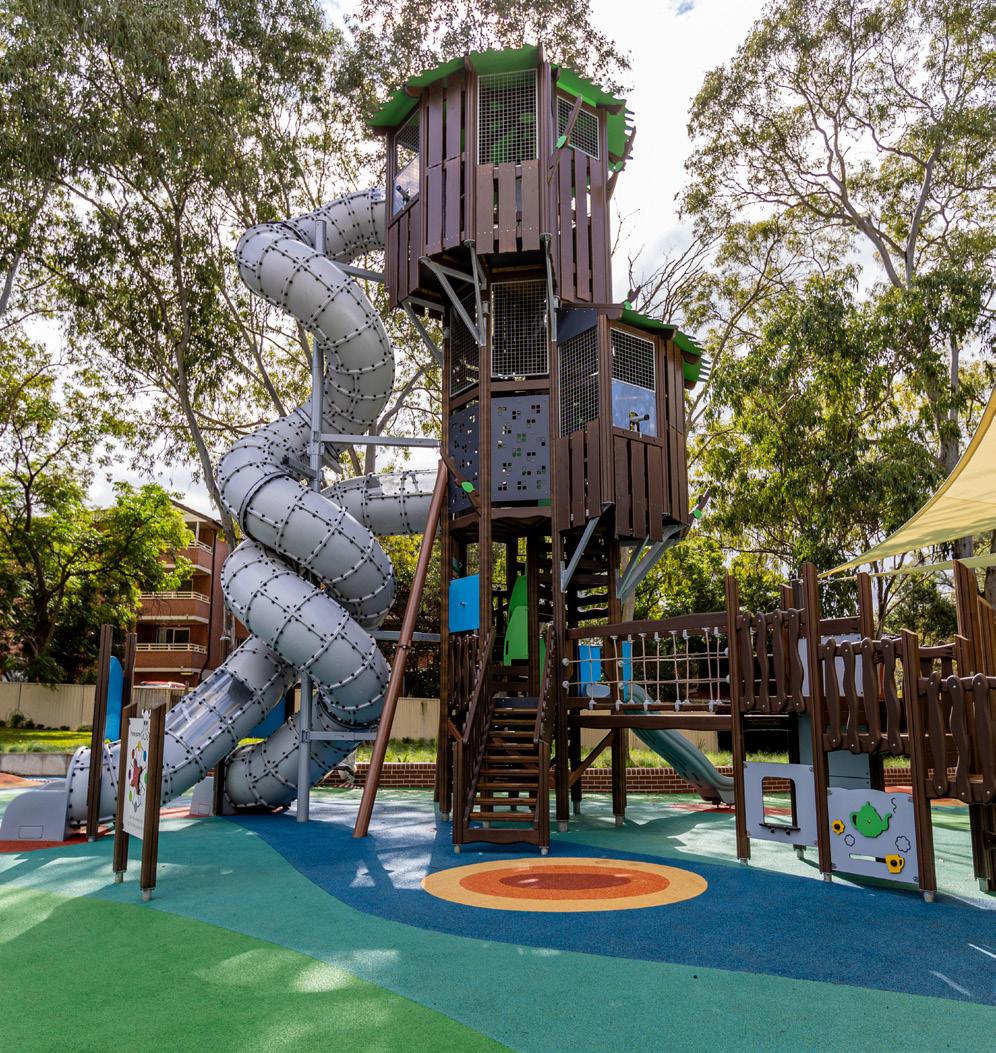
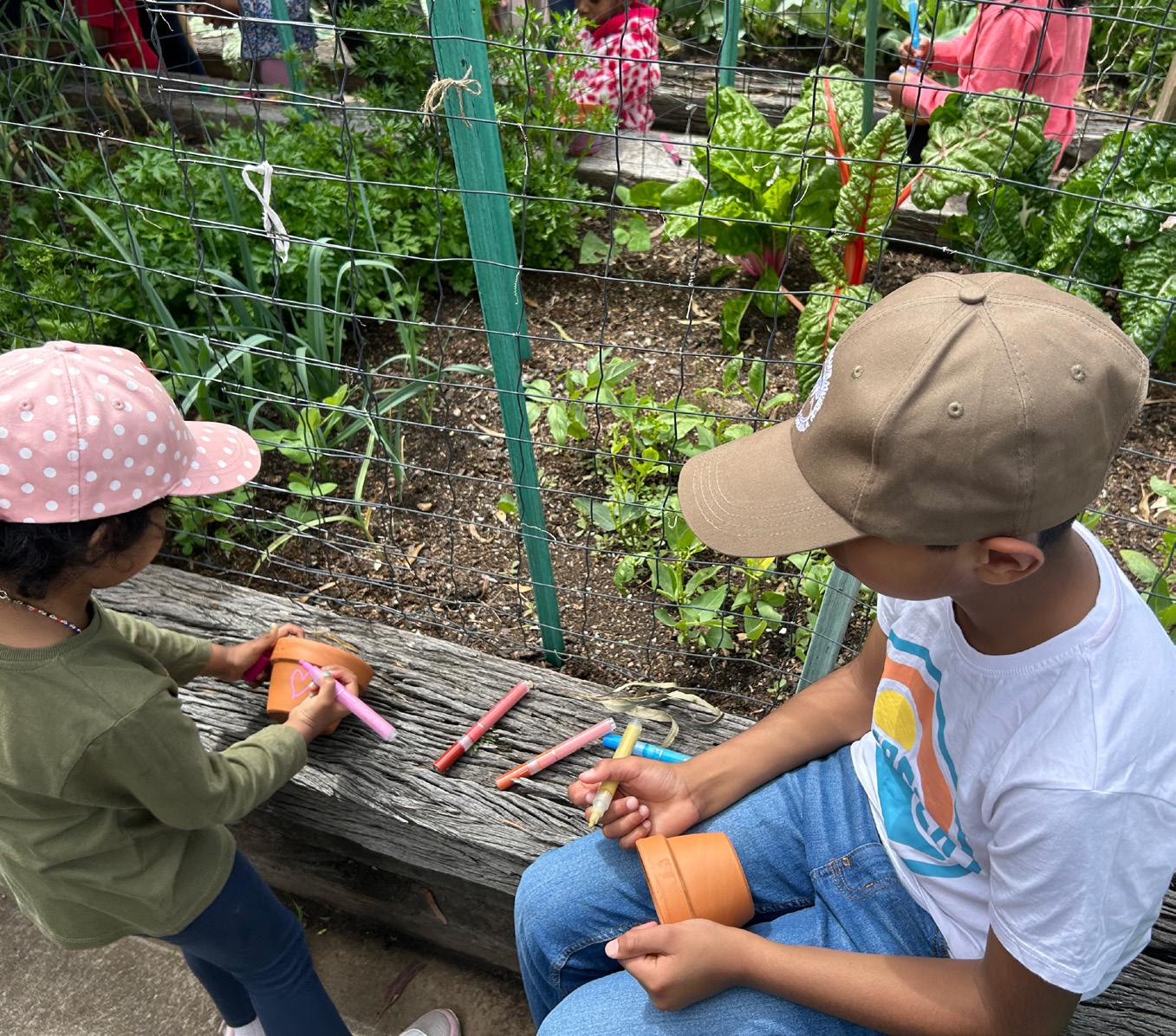
Cumberland City is one of the most culturally diverse, vibrant and populated local government areas in NSW. Approximately 245,323 people currently call Cumberland City home and this is expected to grow to around 300,000 people by 2036. Our international food, cultural events, high quality community programs, extensive networks of green spaces and our place in the geographical heart of Sydney makes us unique. Cumberland is the place to be!
The Cumberland community is diverse with many young families who are professionals, speak multiple languages and have come from a range of backgrounds and experiences that contribute to Cumberland’s unique flavour. With just over half of all residents born overseas and almost a quarter having arrived in Australia in the last five years, Cumberland City is for many, their first introduction to life in Australia.
Our community has an array of facilities available, including access to five swimming pools, eight libraries, high quality community venues, education and care facilities and a network of town centres supporting diverse and dynamic small businesses. Cumberland’s towns centres are great places to come together and are a focus for community life. These provide retail, entertainment and employment opportunities, supporting and enriching future growth of our residents.
With opportunities for markets, festivals and other community events, our town centres are an important part of the social fabric of Cumberland and a meeting place for the community.

The past, the present, the future
Cumberland City has a rich heritage with many areas of historical and spiritual significance contributing to our ‘sense of place’ and cultural identity. The land that is now part of Cumberland is part of the Darug lands which covered much of modern Western Sydney and is home to Australia’s first peoples. Within the Darug lands lived several distinct tribes or clans and these clans included the Toongagal, Warmuli (Weymali), Burramattagal, Wategora and Wangal peoples. Within Cumberland, there are many areas and specific locations which are steeped with historical and cultural significance.
Our Heritage Committee recognises the significance of Granville as one of Sydney’s oldest suburbs and continues to explore ways of preserving and incorporating heritage elements in the built form and streetscape, not only within Granville but also throughout the Cumberland area.
Two important Aboriginal sites can be found in Union Street Granville and Carhullen Street Merrylands. Evidence at these sites identifies the areas as ‘Paiendra’, meaning members of the inland culture who specialised in hunting possum. The evidence suggests that these Darug members had links with the Dharawal and Gundungurra tribes of the south and south-west.
This region was used by Aboriginal people as a marketplace for the exchange of goods and a ‘Law Place’ for ceremonies. Close to Auburn, visitors can see evidence of Aboriginal settlement in Millennium Park where four scar trees are preserved.
The Pemulwuy suburb was created in 2004 on the historic Prospect Hill. It is named in honour of the Bidjigal clan leader who fought against the European colonists for his people’s right to live on their land. The suburb name was nominated by the Aboriginal and Torres Strait Islander Consultative Committee of the former Holroyd City Council.


On 3 May 1805, a group of Aboriginal women and a young free settler, John Kennedy, arranged a reconciliation meeting on Prospect Hill. This involved Darug Aboriginal leaders and European settlers headed by Reverend John Marsden. It was the first recorded act of reconciliation between Aboriginal people and Europeans in Australia and it ended the ongoing conflict in Parramatta and Prospect.
Prospect Creek was a traditional travel route connecting the Darug and D’harawal people. The creek now forms the border between Cumberland City Council and Fairfield City Council.
In 2005, a series of interpretive Indigenous artworks were installed along the banks of Prospect Creek. The installation consisted of four sets of artworks and path markers, showing the flora and fauna of Prospect Creek, as seen by the Darug people.
Four stories along the creek tell of:
• Yandel’ora – the Ravens and the Crows, created by Jean and Jon South
• Mananga The Eagle Warrior, created by Clive and Jason Groves
• Dahl’wah – The Casuarinas, created by Clive and Jason Groves
• The Sisters Boo’kerrikin - The Story of the Local Wattles, created by Joe Hurst
Shortly after the arrival of the First Fleet at Sydney Cove in 1788, Captain John Hunter sailed the Parramatta River in search of fertile soils to grow crops for the settlement. Exploration of the area brought the settlers further upriver until it was too shallow to travel, at Duck River and Rose Hill (now Parramatta).
In 1789, Watkin Tench, a young First Fleet Marine officer, explored further west. His party of five were the first Europeans to walk from Rose Hill to Marrong (now Prospect Hill).
Following the arrival of Captain Arthur Phillip at Homebush Bay, Parramatta River and a tributary (offshoot) upstream of it was partly explored. At the start of the tributary, they landed on the shore near Clyde. Ducks appeared to be rising out of a swamp and the waterway was named Duck River. These were not ducks, however, but Eastern Swamp Hens.
Cumberland Council was proclaimed on 12 May 2016, resulting from the merger of parts of the southern portion of Auburn City Council, the Woodville Ward of Parramatta City Council, Granville (south of the Western Railway Line) and part of Holroyd.
Holroyd was the first of the former local government areas to be established as the Municipal District of Prospect and Sherwood on 9 July 1872. This area was named Holroyd Municipal Council on 11 January 1927 in honour of Arthur Todd Holroyd the Council’s first Mayor.
The Woodville Ward was originally part of Granville Borough Council, proclaimed on 20 January 1885, with John Nobbs elected as the Council’s first Mayor. When the NSW Municipalities Act took effect in 1907 it became Granville Municipal Council until the end of 1948. From 1 January 1949, Granville integrated into Parramatta Council. Auburn Borough Council was proclaimed on 19 February 1892 with George Wright as the first Mayor.
In 1906, the Silverwater area was added to Auburn Council as a fourth Ward called Newington and then in 1907 the Council became a Municipality as a result of the NSW Municipalities Act. From 1 January 1949, the neighbouring Lidcombe Council was absorbed into Auburn Municipality resulting from Statewide council mergers. Under the terms of the Local Government Act 1993, Auburn Municipality was reclassified as Auburn Council on 1 July 1993 and became a City Council on 24 June 2009.
Lidcombe Municipality was proclaimed on 10 December 1891 as Rookwood Borough Council. Alderman Richard (Dick) Slee became Rookwood’s first Mayor. As early as 1898, the Council sought to change its name to disassociate the Rookwood Township from the adjacent Rookwood Necropolis. The Council changed its name to Lidcombe, after Mayors Frederick Lidbury and Henry Larcombe, on 22 October 1913 and remained as Lidcombe Municipality until 31 December 1948.
Following amalgamation in 2016, the first Council elections of the former councils were held in September 2017 with Cumberland residents electing three Councillors representing each of Cumberland’s five wards. In 2020, Cumberland Council amended its trading name to include ‘city’.
There has been momentous change in the last 150 years and we will continue to work with our elected officials and the community to deliver the best possible outcomes now and into the future.
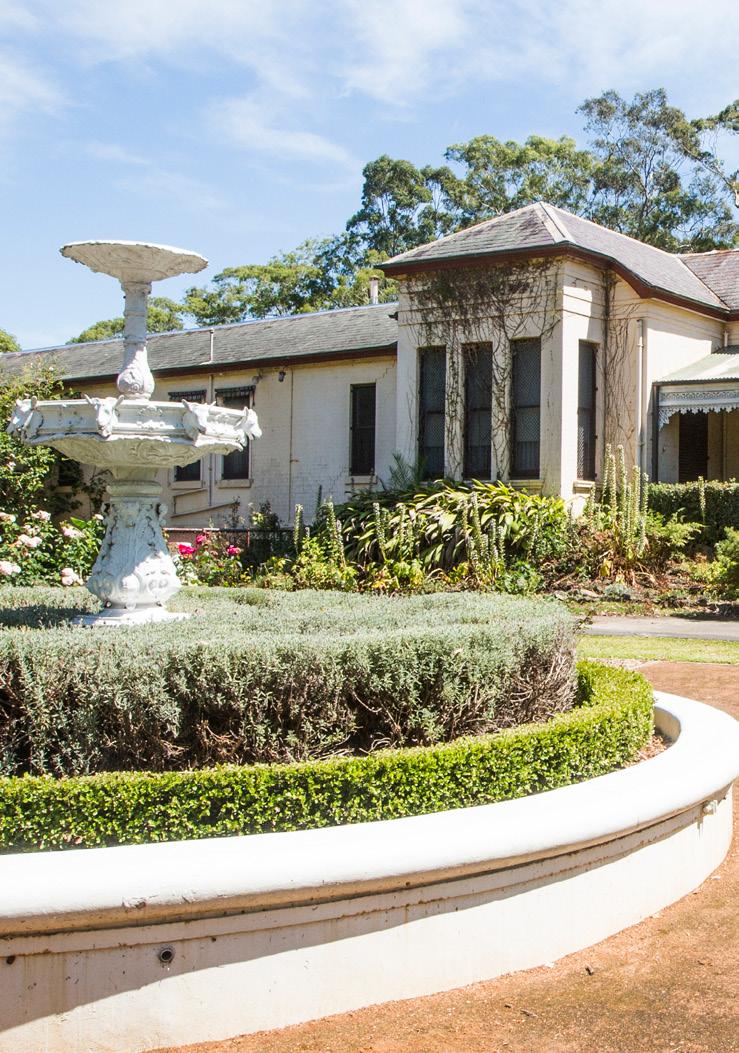
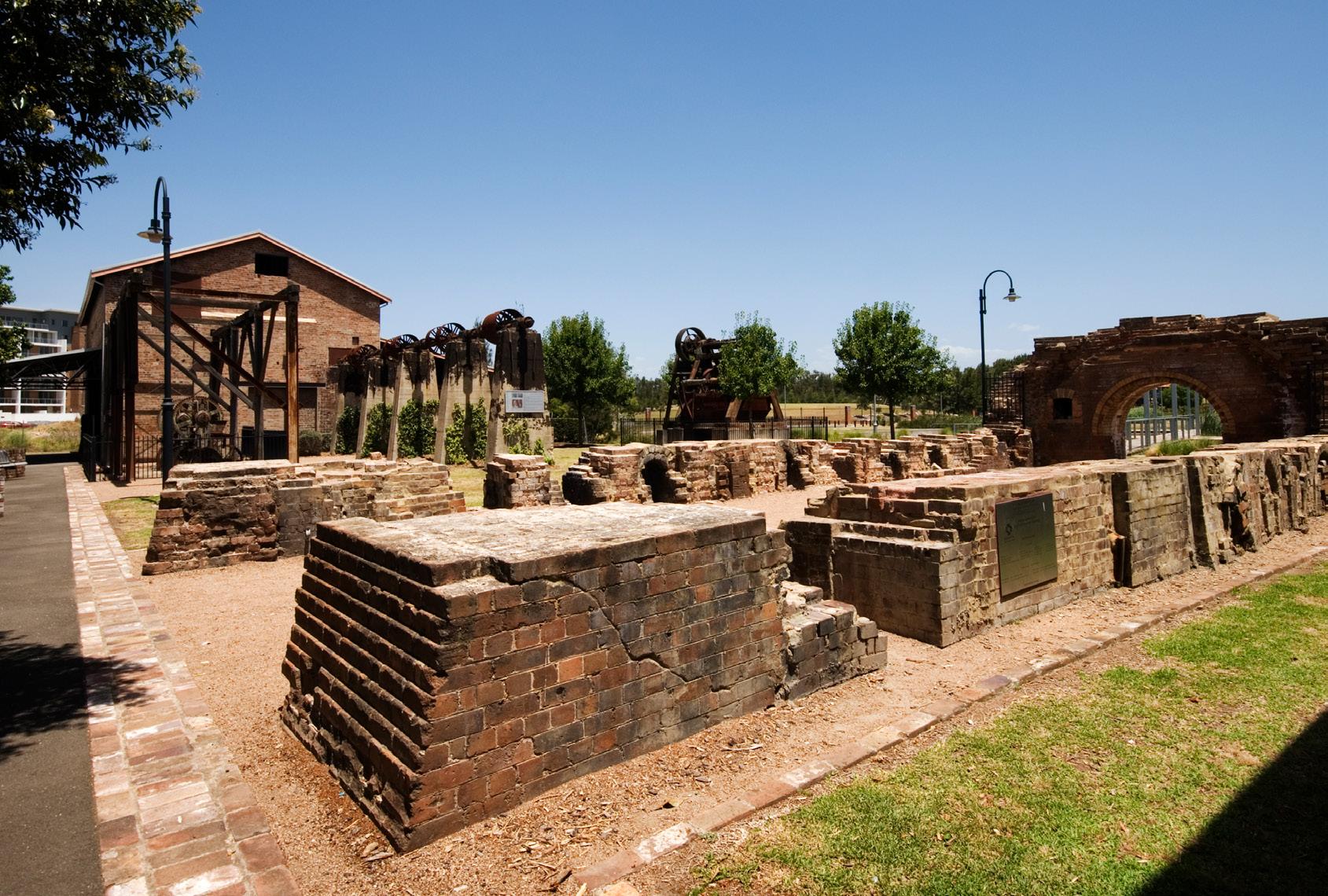
Cumberland City covers more than 72 square kilometres and is strategically located in the geographic heart of Sydney, less than five kilometres south of the Parramatta CBD and approximately 20 kilometres west of the Sydney CBD.
Cumberland is made up of five wards, each with a distinct built form character and land use mix, presenting unique opportunities for future growth and development.

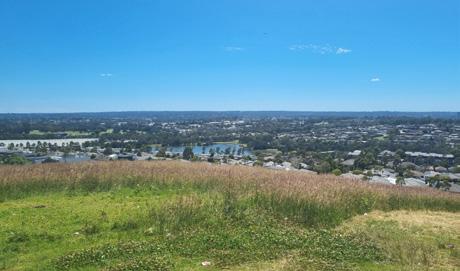
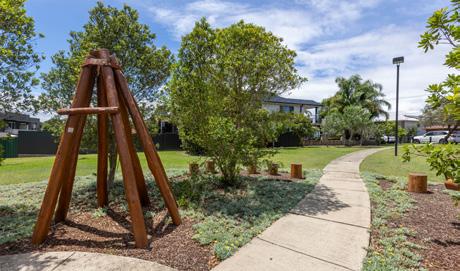
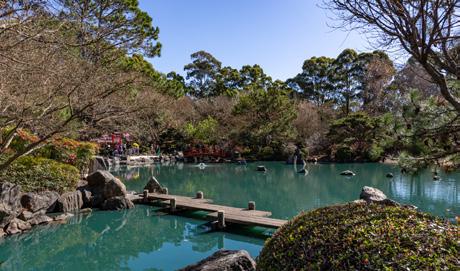
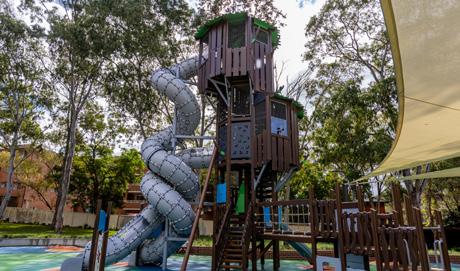













302,453
Cumberland benefits from its location and proximity to strategic centres and employment hubs immediately surrounding the area. The relevant State level policies and plans, including the Central City District Plan and strategic planning for the Greater Parramatta and Olympic Peninsula growth area, present opportunities for development in jobs and housing, particularly in and around key centres and employment lands in Cumberland City.
Council is committed to supporting and promoting our centres and employment lands to provide more local jobs and services for our growing population and to benefit the Cumberland community and local economy.
Cumberland is home to substantial industrial and employment lands accommodating a diverse range of jobs and services. The Cumberland economy provides over 87,630 local jobs (Source: National Institute of Economic and Industry Research 2023) in over 27,631 businesses.
The main industries in Cumberland contributing to local employment are:
• Manufacturing
• Transport, Postal and Warehousing
• Retail Trade
• Construction
• Healthcare and Social Assistance
• Education and Training.
Cumberland appeals to these sectors due to accessibility to various distribution catchments across metropolitan Sydney. Cumberland’s local economy relies on local employment and investment. The prospect of a better connected area is a catalyst for investment in our employment lands. Our traditional industrial base continues to offer strong employment opportunities, while at the same time our employment lands are transitioning to embrace innovation, creative and technology-based industries. Our population is young and increasingly tertiary educated, providing a ready workforce to support new and emerging enterprises.
The majority of land use in Cumberland is residential, with the second major contributor being industrial/employment. The land use framework in Cumberland is well placed to support additional growth in both jobs and housing in the short to medium term, particularly in our key centres.
Whilst land in and around these key centres is zoned for higher density development, there is an opportunity to explore options for medium density development as transition zones and in areas around our key centres and transport nodes to support the 30-Minute City and to align with the Low and Mid-Rise Housing reforms led by the NSW State Government.
Our town centres have a range of services and facilities to support future growth. They are a focus for community life, retailing and entertainment, providing a highly valued ‘cultural’ atmosphere. With opportunities for markets, festivals and other community and cultural events, our centres are an important part of the social fabric of Cumberland and a meeting place for the community.
Cumberland is generally well serviced by rail, with a major interchange at Lidcombe. The road network is also extensive and includes cross-regional connections through Woodville Road (north and south connection), M4 Motorway and Parramatta Road (east and west connection). The Cumberland community will also be serviced by the Sydney Metro West, which will terminate at Westmead, providing frequent services to both Parramatta CBD and Sydney CBD. There is also an extensive bus network servicing the Cumberland area. Planned investment in regional transport upgrades and infrastructure by the NSW State Government will significantly improve access for residents and visitors, both within and beyond the Central City District and Cumberland, to Sydney’s key centres. Our industry and businesses will also benefit from improved connections to key markets, major ports and airports.
Cumberland’s natural environment consists of a large network of parks and open spaces. The Duck River (the largest tributary of the Parramatta River) is the ‘green heart’ of Cumberland providing excellent opportunities for both passive and active recreation and biodiversity. Several highly valued community and tourism assets exist along the corridor, including the Auburn Botanic Gardens and various sporting fields and parks. Whilst the quality of our existing open space is generally high, there are gaps in the provision of open space, in particular local-scale open space, in some areas. There are opportunities to improve liveability standards by addressing the gap in open space in these neighbourhoods to better meet current and future needs.
Cumberland is supported by a range of community services, schools, education and care services and child, youth and family services. Many of our existing youth, senior and health services are located within proximity of train stations making them highly accessible to our community. However, the distribution of these services is not evenly spread throughout the area. Council continues to identify opportunities to address the gap in provision and distribution of social infrastructure throughout Cumberland.
Cumberland’s population is forecasted to grow to approximately 300,000 people by 2036. Increases are forecasted for families with dependents, meaning that young families will be attracted to Cumberland and will continue to grow in number. Access to education, care and support services for children, young people and their families will be among our community’s highest priorities. The population and number of households in Cumberland has increased substantially in recent years and this growth is forecast to continue. Accordingly, the number of dwellings needed to house the future population is forecast to increase.
Based on the projected growth, it is essential to recognise the number of households and dwellings required to meet the housing needs of the population and to ensure that an appropriate supply of housing can be delivered to meet the population targets in addition to the expanded services and facilities needed for a growing population.
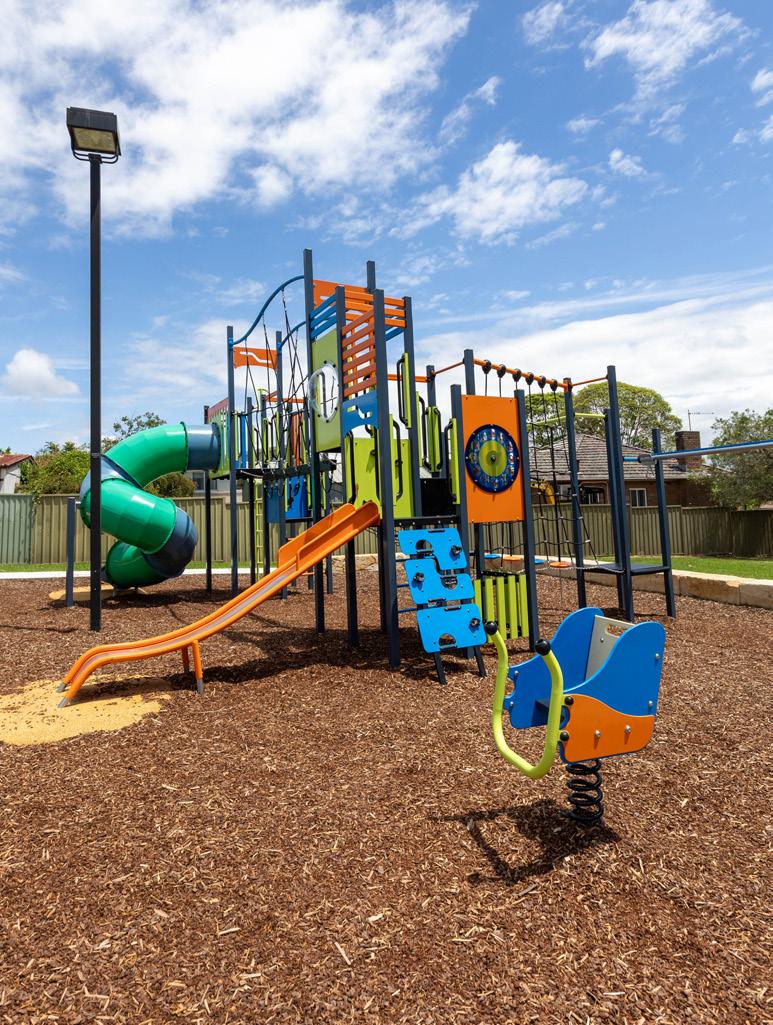

The capacity of the Cumberland community to respond to the risks and challenges it faces now and in the future is referred to as city resilience. The strategic risks and challenges that threaten Cumberland have a local and regional context and can be broadly organised into two categories:
1. Chronic stresses which weaken the fabric of a city on a day-to-day or cyclical basis. Challenges such as climate change, housing affordability, infrastructure provision, access to public transport, homelessness and family violence.
2. Acute shocks which are sudden, short term events that immediately threaten or impact the city. Examples include major storm events, heatwaves or disease outbreaks.
It is important that the Cumberland community is prepared for and can respond to these challenges, whether acute shocks or chronic stresses. A lack of preparedness can be expensive and more impactful. Taking appropriate action to proactively manage city challenges offers multiple benefits.
When disruptions are expected and planned for, the situation can:
• Be prevented or mitigated
• Be easier to adapt to
• More rapidly return to normal
• Provide benefits even where there are no disruptions
• Improve productivity, prosperity and equity in times of stability.
Cumberland faces the broad challenges of the wider Sydney Region and works closely with the Resilient Sydney Program to increase local preparedness for these issues. In addition, Council actively prepares for:
• Accessible and appealing public amenity (Infrastructure)
• Community partnerships and support (Capacity)
• Valuable and reliable services (Services).
To best position Cumberland as a resilient city, we actively participate in the Resilient Sydney Program which sets the direction we are to take to strengthen our ability to survive, adapt and thrive in the face of increasing global uncertainty and local shocks and stresses.


COUNCIL’S ROLE
ENGAGEMENT METHODS
COMMUNITY’S ROLE
• Advertisements
• Fact sheet
• Newsletter
• Social media
• Website
• Translated material
• Letters
In addition to ‘inform’ methods:
• Public exhibition
• Dedicated hotline
• Onsite display/signs/posters
• Surveys
• Focus groups
In addition to ‘inform’ and/or ‘consult’
• Workshops
• Webinars
• Pop Up Stalls
• Meetings with Council staff
• Public meeting/Online seminar
• Meetings with key stakeholders
In addition to ‘inform’, ‘consult’ and/or ‘involve’
• Participatory decision making
• Co-design
• Working groups
• On-going feedback (e.g. panels, key stakeholders/ reference groups)
In addition to ‘inform’, ‘consult’, ‘involve’ and/or ‘collaborate’
• Council Advisory Committees
Cumberland’s Community Strategic Plan was shaped by extensive engagement with the local community, ensuring their insights, aspirations and lived experiences guided Cumberland’s vision for the next decade. Engagement activities were guided by best practice principles from the International Association for Public Participation (IAP2) and focused on identifying and understanding key stakeholders impacted by Council decisions. Council’s collaborative and tailored engagement approach involved participation at all levels from inform to empower.
13,418 Have Your Say page views
6 Pop Up Sessions
9,480 Community Responses
1,300+ Engagement Session Attendees
6 Create Cumberland Sessions
80,000 Flyers in letterbox drop distributed promoting Create Cumberland
1 Business Engagement Sessions
During the consultation, Council collected 9,480 responses through a variety of channels. This included face-to-face engagement sessions, a letterbox drop, pop up stalls, surveys and online tools including:
• Budgeting Simulator
• Interactive Mapping
• Ideas Wall
• Quickpoll.
The structured timeline highlights the key stages and activities undertaken to gather community feedback and comprehensively capture the community’s aspirations and vision for the next decade.



























































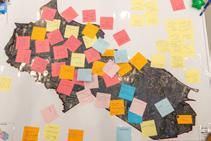


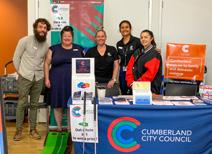


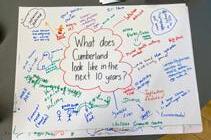

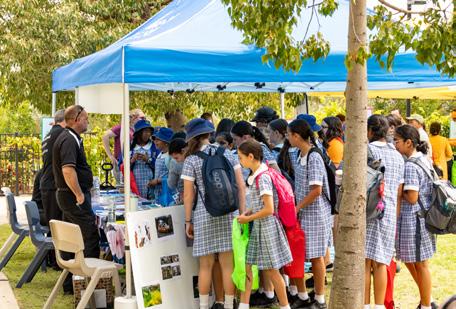
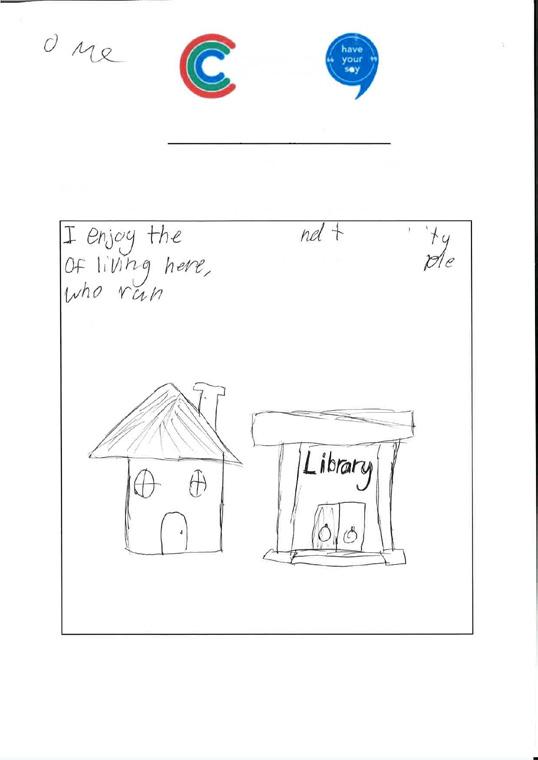


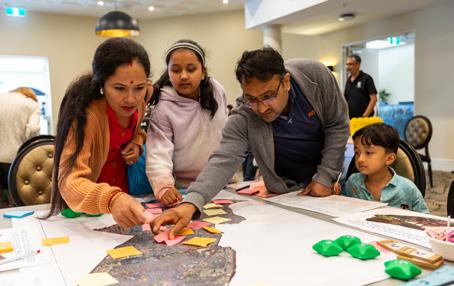
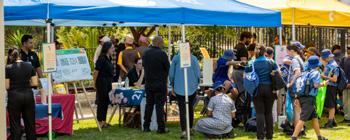

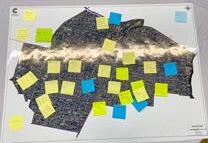
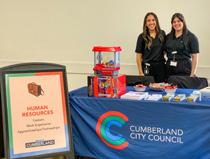

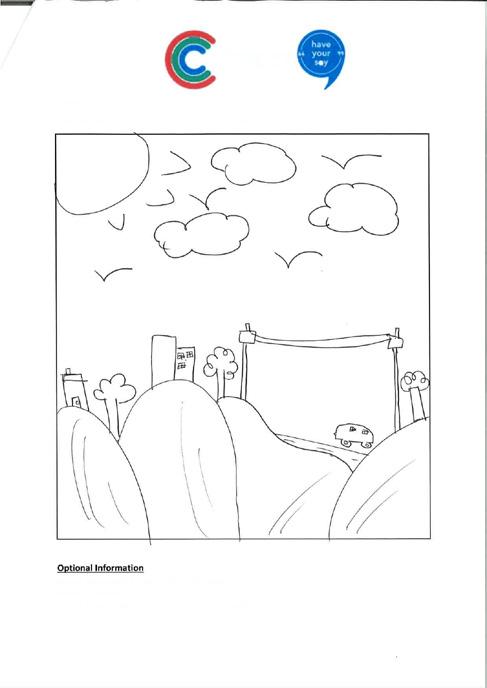
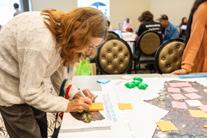

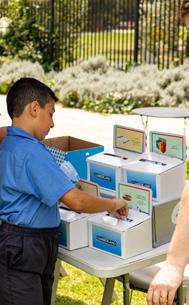
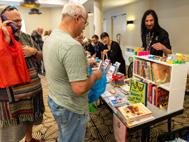
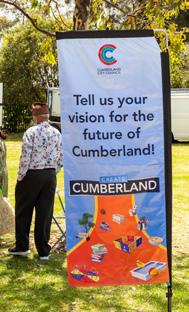
“Travelling around my area, the Wentworthville Ward, is easy thanks to local shops being close by and public transport close by as well. My dog enjoys walking the neighbourhood, and there are many homes with animals so he can make friends too.”
F, 45-64, Granville
“Cultural education to ensure people treat people and neighbourhood and surroundings with respect and common sense.”
F, 45-64, Granville
“Better regulation to ensure safety and compliance to legislation. Parking, road rules etc. Better care of landscaping, public and private to make area visually appealing.”
M, 45-64, Regents Park
“Social housing and public transport”
M, 45-64, Wentworthville
“The cost of living”
M, Under 14, Woodpark
“Fix up all the potholes, add more parks for kids that are older.”
F, Under 14, Yennora
“More ways to get around without a car, i.e. pedestrian crossings, bike paths, reliable public transport.”
M, 15-24, Granville
“Less crimes and more secured place to live”
F, 25-44, Girraween
“I love Cumberland because there so much places to go and so much facilities which makes Cumberland a great place to live.”
F, Under 14, Granville
“Have more affordable rental/housing.”
F, 45-64, South Granville
“Plant more shade trees along footpaths and in parks and public spaces; this is Western Sydney, and it gets really hot for long periods.”
M, 45-64, Wentworthville
“In the future to invite more children to ask about their opinion.”
F, Under 14, Merrylands
“Create a community garden where residents can grow produce, socialise, and relax, fostering a sense of belonging and sustainability in Guildford.”
F, 15-24, South Granville
“More shops and a primary school, we are a familyoriented suburb with a lot of foot traffic.
Greystanes schools can’t handle more kids.”
“More parking spaces in town”
M, 45-64, Berala
“More libraries local language books and expanded activities for kids at multiple locations to reduce crowding and waiting times.”
F, 65+, South Wentworthville
“Access to well-maintained parklands such as Auburn Botanical Gardens and availability of free exercise programs such as Live Life Get Active in Phillips Park.”
F, 25-44, Berala
“Education to ensure the safety of women of minority backgrounds in the area. My wife has had a number of negative experiences.”
M, 25-44, South Granville
F, 25-44, Greystanes
“Repair some of the local footpaths to make them safer. More street lighting.”
F, 65+, South Wentworthville
“Need more community activities. Training for older people. Care and open activity for older people. Parking for older people. More social activities for pensioners.”
M, 65+, Granville
“Take advantage of the demographic. There’s potential to transform key streets like Station Street, Wentworthville into a cultural hub like Harris Park, Burwood etc.”
M, 15-24, Wentworthville
“Diversity has improved and made the area better. Green areas/parks (Holroyd/Central Gardens) are fabulous, also provision of shade over play areas and disability swings.”
F, 45-64, Merrylands
“Sustainable approach to housing energy alternatives, food, growing and waste management awareness. Aim for refuse and reuse, before reduce or recycle strategy. Promote walking and cycling to commute, shop, rather than merely sport or entertainment.”
M, 45-64, Granville
Key themes and issues facing Cumberland over the next decade were identified through community feedback, reflecting the levels of service the community has indicated it expects. Concerns around public safety, including crime and youth safety, highlighted the need for better street lighting and protection initiatives. Infrastructure challenges, such as an aging road network, footpath asset conditions and inadequate parking spaces, need to be addressed to meet the levels of service required by a growing population. There is also a critical requirement for more affordable housing, as well as redevelopment opportunities to diversify housing mix and ensure development supports business prospects.
The local economy will be strengthened through the development of a thriving employment hub, with a focus on attracting retail, cultural and dining establishments to meet the levels of service desirable for a growing population. Simultaneously, Cumberland will need to prioritise environmental sustainability by tackling climate change, protecting green spaces and improving waste management to accommodate future growth.
Social wellbeing issues, including mental health challenges linked to social media, rising rates of homelessness (0.9% of Cumberland’s population are homeless) and tending to the needs of our seniors, requires targeted actions to meet the levels of service that address these concerns. Addressing cost of living pressures will be vital for the community’s long term stability, as community members cite difficulty maintaining their lifestyle. Traffic congestion and heavy vehicle parking in residential areas are additional concerns that will need to be managed to improve mobility.
Staying in touch with technological advancements and addressing over population are essential for sustaining a competitive and viable region for people who work, live, play and visit the Cumberland area. Moreover, efforts to change the perception of Cumberland as a lower socioeconomic area compared to neighbouring regions will strengthen the community’s sense of pride and identity.
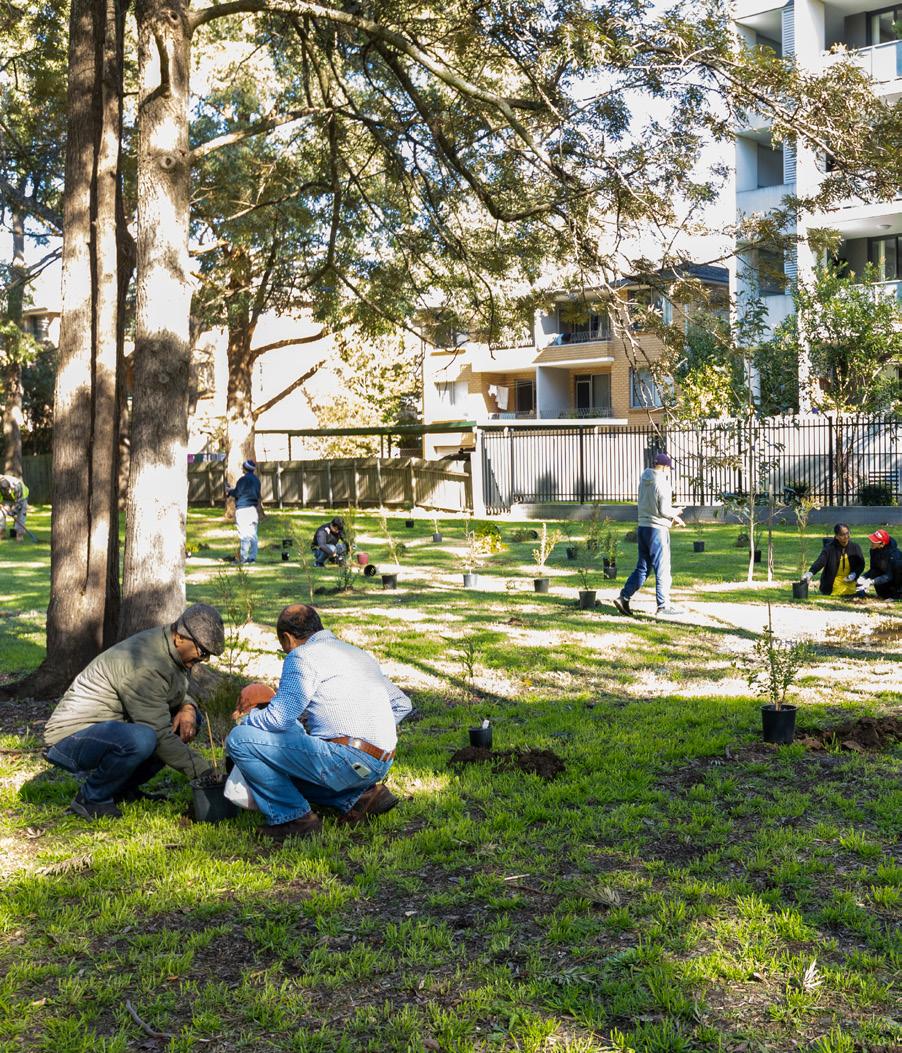
Four strategic directions have been identified that address the complex challenges and opportunities that lie ahead.
Most strategic directions are consistent with Cumberland’s previous Community Strategic Plan.
‘Supporting Community Health, Safety and Wellbeing’ has been updated to ‘Supporting a safe, healthy, creative and connected community’ reflecting the community’s desire to foster creativity, learning and deeper cultural connections. Community sentiment remained consistent with an emphasis on safety, health and inclusivity.
‘Enhancing the natural and built environment’ remains unchanged as the community’s desired strategic direction. This reflects a shared commitment to environmental stewardship and ensuring places and spaces are vibrant. The community’s perception has highlighted consistent focus on enhancing liveability, preserving local character and encouraging economic prosperity.
‘Delivering Sustainable Infrastructure and Services’ has been updated to ’Delivering sustainable, safe and accessible infrastructure and services’ to highlight the community’s importance of safety and sustainability in infrastructure planning. However, perception has remained consistent, with an emphasis on maintaining public spaces, enforcing local safety regulations and ensuring equitable green space access.
‘Providing local leadership’ has been updated to ’Providing transparent, accountable and strong local leadership’ reflecting the community’s consistent emphasis on strong leadership, supported by good governance and transparency. Collective decision-making remains a consistent priority as there is sustained demand for accessible information about Council services, programs and events.
The Strategic Directions align with the Quadruple Bottom Line, where the pillars of Social, Environmental, Economic and Civic Leadership are embedded within Council’s decisionmaking, planning, reporting and day to day function.
Holding more community events and activities such as street fairs, festivals and community gardens to bring people together
Local neighbourhoods made safer for women
Increased tree coverage
COMMUNITY NEEDS AND VALUES
Enhanced safety measures including increased surveillance and police presence, especially at night
Upgrades to footpaths, better verge management and clean ups of unattended street rubbish
Concerns over the impact of higher density developments
Lack of parking and amenities to support all development
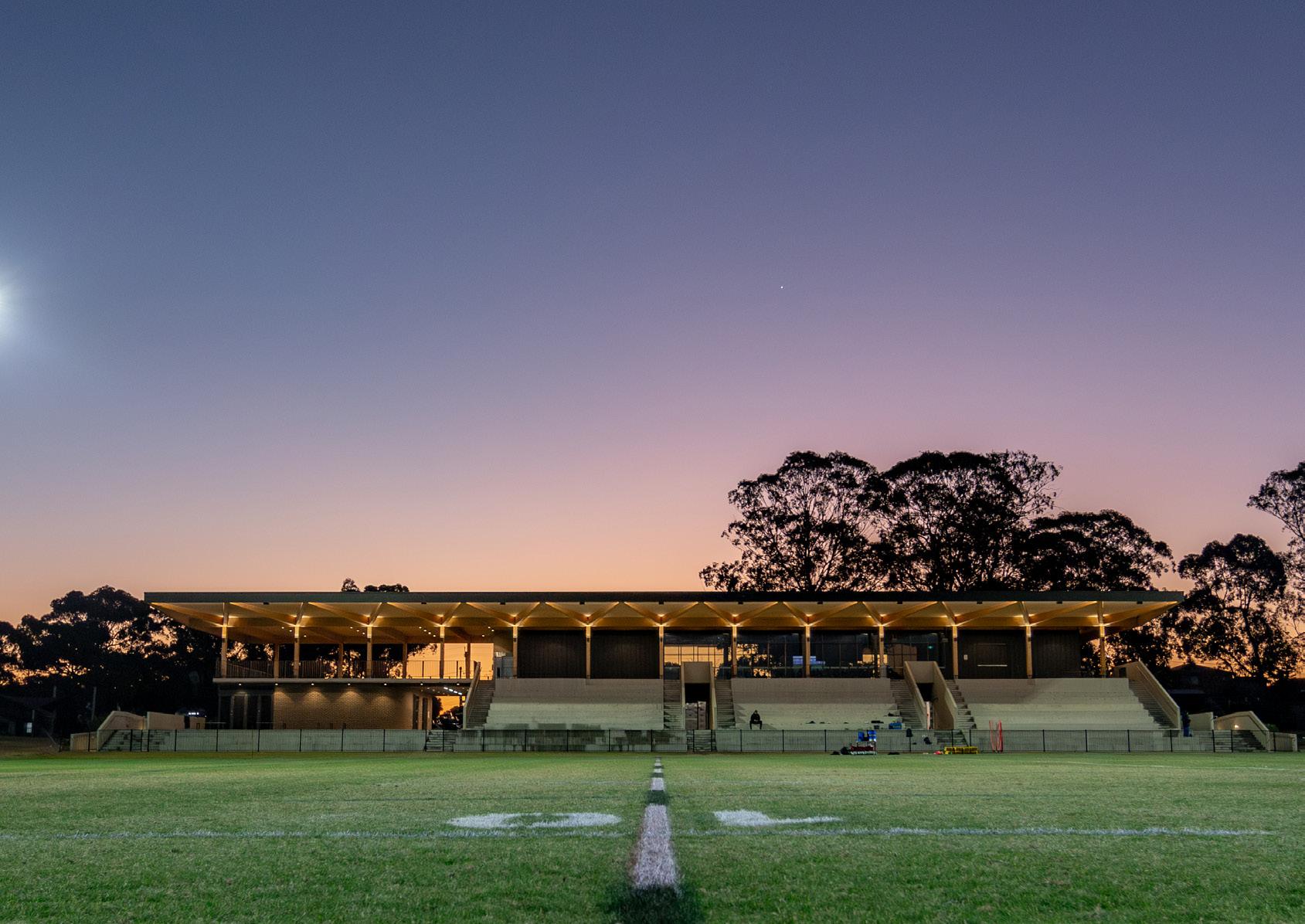
Cumberland City Council has taken an integrated approach to developing the full suite of Integrated Planning and Reporting documents.
The foundation of our plans is to create a strong line of sight across documents and clearly communicate key components of the IP&R Framework.
Cumberland will introduce icons to more visibly represent key information including:
• Strategic Directions
• Quadruple Bottom Line (QBL)
• Social Justice Principles
• Council’s Role
Following extensive community engagement, the Community Strategic Plan has captured what the community values most about Cumberland and conveyed this through four high level Strategic Directions.
The four Strategic Directions will be represented throughout Council’s IP&R documents with the following icons:
Supporting a safe, healthy, creative and connected community

Enhancing the natural and built environment
Delivering sustainable, safe and accessible infrastructure and services
Providing transparent, accountable and strong local leadership
There are four pillars which local government must build to ensure the community receives the services they expect. The Quadruple Bottom Line (QBL) is a framework to evaluate performance across these four pillars:
• Social
• Environmental
• Economic
• Civic Leadership.
Council is required to plan based on the QBL in an integrated way to ensure Cumberland City balances community needs to create a sustainable city. The Strategic Directions within the Cumberland Community Strategic Plan are aligned with the four pillars of the QBL, with reporting against these directions also representing reporting against the QBL.
The four pillars of the QBL will be represented throughout Council’s IP&R documents with the following icons:
Access and equity
Cultural activities
Providing and maintaining community facilities Affordable housing
issues
Recreation and active living Consultation networks
Built environment – urban design and planning for growth Public health
Total water cycle management
Preserving biodiversity
Climate change impacts and initiatives
Alternative energy sources
Waste management Air quality
Regional economic profiles and opportunities Tourism
Economic sustainability strategies
Commercial and industrial opportunities
Transport links between communities in our LGA
Public safety
Environmentally sound operation of assets
Protecting specific environmental features
Environmental impact of development
Financial sustainability of Council
Providing vocational pathways Small business strategies
Supply chain issues
Robust policy frameworks
Decision making principles and allocation of priorities
Leadership and representation
Council’s role as a responsible employer
Business efficiency and probity expectations of Council
Ethical practices
Transport and trade links with other centres
Community ownership and implementation of the strategic plan
Consultation and community participation in decision making
Levels of service
Council‘s planning and service delivery is based on social justice principles. These principles ensure fairness in the distribution of resources, access to services and participation in decision-making to benefit the community.
To ensure all people have access to goods and services regardless of age, gender and ethnicity. Council’s planning outlines a commitment to provide and advocate for services and facilities that are beneficial to Cumberland’s diverse population.
To enable people to participate in decisions which affect their lives and support opportunities for planning and decisionmaking processes to reflect the diverse and wide range of community voices.
Social Justice Principles will be represented throughout Council’s IP&R documents with the following icon:
To protect individual liberties to information about circumstances and decisions affecting people and to provide an appeal mechanism for decisions which they feel are unfair.
Council is responsible for the provision of goods, services, facilities and carrying out activities appropriate to the current and future needs within its local community and of the wider public. Many of the issues facing Cumberland are complex and are beyond simply delivering services. It is acknowledged that Council cannot deliver everything needed to help the community achieve their vision for the future set out in the Community Strategic Plan. Other partners, such as state agencies and community groups, may also be engaged in delivering the long term objectives of the Plan.
The CSP identifies the role of Council in contributing to the Strategic Directions.
• Deliver
» Refers to the direct services and facilities Council delivers to meet local community needs.
• Partner
» Partnering involves collaborating with other organisations, government agencies, businesses and other community groups to achieve shared outcomes.
• Advocate
» Advocate on behalf of our communities, giving a voice to their needs and aspirations. Council will call on other levels of government and businesses for policy and regulatory reform as well as changes to service provision for the benefit of the city and its communities.
Council’s role will be represented throughout Cumberland’s IP&R documents with the following icons:
To ensure fair distribution of available resources across society. Council is committed to fairness in providing services, making decisions and distributing resources equally, giving consideration for those in need to ensure increased collective benefit for the whole community.
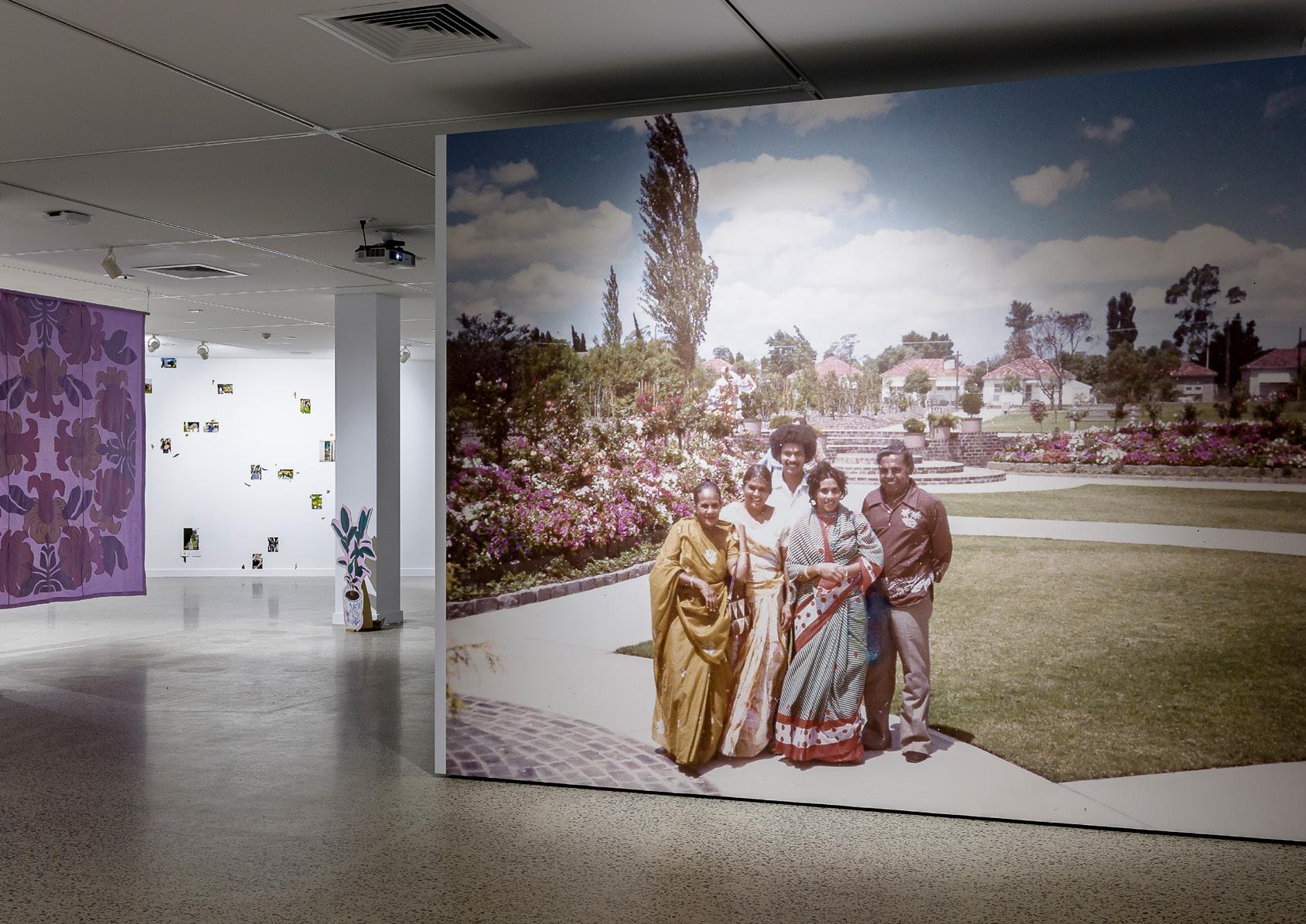
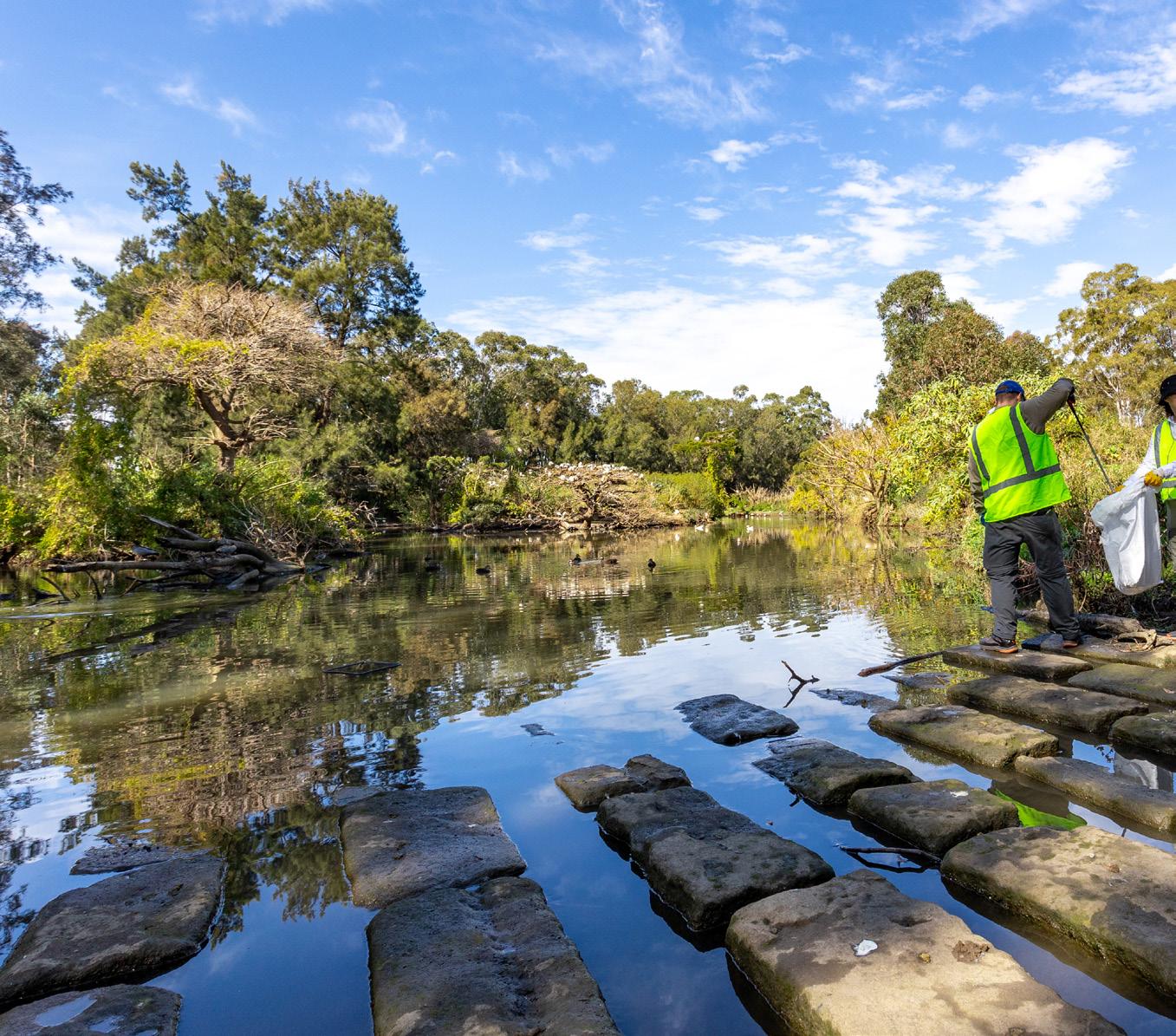
OUR COMMUNITY VISION:
Our shared aspirations reflect what the residents of Cumberland City envision for the area, both now and in the future. These aspirations guide us in ensuring that we remain focused on achieving what we set out to accomplish.
Following extensive community engagement, the Community Strategic Plan has four high level strategic directions, capturing the community’s aspirations for Cumberland City:
Supporting a safe, healthy, creative and connected community
Enhancing the natural and built environment
Delivering sustainable, safe and accessible infrastructure and services
Providing transparent, accountable and strong local leadership
STRATEGIC DIRECTION 1
Supporting a safe, healthy, creative and connected community
STRATEGIC DIRECTION 2
Enhancing the natural and built environment
Objective 1.1 Our community is resilient, cohesive, creative and supports inclusion, access and diversity
• Strategy 1.1.1 Encourage and support participation in children and youth services
• Strategy 1.1.2 Embed culture and creativity in everyday life, providing access to cultural events, arts and activities
• Strategy 1.1.3 Provide and promote resources, services and programs that celebrates the diversity in our community
Objective 1.2 We have a safe, healthy and connected community
• Strategy 1.2.1 Provide access to crime prevention and community safety initiatives
• Strategy 1.2.2 Deliver accessible health and wellness programs and initiatives
• Strategy 1.2.3 Provide access to services and information to support health, wellbeing and address homelessness
Objective 1.3 Our community is empowered with knowledge, support and capacity building
• Strategy 1.3.1 Ensure high quality education and care services are available
• Strategy 1.3.2 Provide education and recreation activities through high quality and accessible library services and programs
• Strategy 1.3.3 Provide access to employment and capacity building pathways and opportunities
Objective 2.1 We celebrate our diverse built and natural environments
• Strategy 2.1.1 Prepare land use plans and controls that support population growth, provide diverse housing and employment options and value our local character and heritage
• Strategy 2.1.2 Care for our natural environment to support a resilient and sustainable city
• Strategy 2.1.3 Facilitate planning activities through development management and environmental services and programs
Objective 2.2 We have places and spaces that are vibrant, accessible and encourage economic prosperity
• Strategy 2.2.1 Cultivate an environment where businesses and communities can flourish
• Strategy 2.2.2 Improve access and convenience through traffic and transport initiatives
• Strategy 2.2.3 Local infrastructure is designed to be sustainable, safe and fit for purpose
STRATEGIC DIRECTION 3
Delivering sustainable, safe and accessible infrastructure and services
Objective 3.1 We have public spaces and recreational assets that are welcoming, liveable and promote pride in the area
• Strategy 3.1.1 Provide equitable access to open green spaces
• Strategy 3.1.2 Ensure our valued recreational spaces and venues are fit for purpose and encourage active lifestyles
• Strategy 3.1.3 Provide safe, accessible and welcoming recreational initiatives, programs and services
Objective 3.2 We have a clean and safe environment to live, work and play
• Strategy 3.2.1 Local laws and regulations are monitored and enforced for the benefit of all people in Cumberland
• Strategy 3.2.2 Embed community pride in the cleanliness and upkeep of our valued public spaces and streetscapes
• Strategy 3.2.3 Provide access to sustainable waste services that keep our community clean and tidy
Objective 3.3 Our community infrastructure assets are well planned, delivered and maintained
• Strategy 3.3.1 Plan and deliver accessible, safe and high quality infrastructure and services
• Strategy 3.3.2 Maintain and renew Council’s infrastructure network and assets
STRATEGIC DIRECTION 4
Providing transparent, accountable and strong local leadership
Objective 4.1 We are proud to be served by a sustainable, responsible and transparent organisation, underpinned by good governance
• Strategy 4.1.1 Build public trust in local leadership and embed a culture of governance and probity in Council’s processes and services
• Strategy 4.1.2 Operate in a financially responsible manner to deliver services and facilities that offer value for money and create economic growth ensuring long term sustainability
• Strategy 4.1.3 Attract and retain local talent to position Council as an employer of choice
Objective 4.2 We make progressive decisions, building a culture of sustainable innovation, excellence and safety
• Strategy 4.2.1 Drive and implement continuous service excellence and business improvement through robust work practices and reviews
• Strategy 4.2.2 Ensure sustainability through innovative, efficient and effective technology practices
• Strategy 4.2.3 Foster a culture of wellbeing, learning and safety
Objective 4.3 We are well informed, engaged and included in decision making and long term planning and have easy access to Council
• Strategy 4.3.1 Effectively communicate and engage with the community about services, programs and offerings
• Strategy 4.3.2 Empower community involvement in decision making initiatives to drive a collaborative approach for long term planning
• Strategy 4.3.3 Deliver excellence in customer service and provide easy access to community centres and civic engagements
• Strategy 4.3.4 Provide equitable access to information and data to help make informed decisions
Outlines the high level actions to be undertaken by Council and its partners and answers the question ‘How will we get there?’
Highlights the key community priorities.
Defines the community’s long term vision and answers the question ‘Where do we want to be in 10 years’ time?’
Council’s Role
Council serves as a custodian of community objectives, working in partnership with other governments, businesses, industry groups and community organisations to achieve shared goals.
Incorporates federal, state and regional priorities, plans and strategies to guide and enhance the achievement of the Strategic Directions.
These provide a framework to measure and report progress on the implementation of the CSP. Indicators are based on a range of available data sets.
Performance indicator baselines are set to answer ‘Where are we now?
Statement
This outlines community’s vision and aspirations for Cumberland in 2035.
Foundation of our Plans
Aligns and integrates our strategic directions to the Quadruple Bottom Line and Social Justice Principles, creating strong line of sight across our documents.
Quadruple Bottom Line (QBL)
Alignment to the four QBL pillars (Social, Environmental, Economic and Civic Leadership).
Social Justice
Principle Icon Alignment through Access, Equity, Participation and Rights, promoting equal opportunities for resource access, service inclusion and decisionmaking.
Achieving long term goals relies on strong partnerships. While this Plan highlights key partners, it remains open to new collaborators to drive shared outcomes.
Council’s strategies and plans that provide detailed guidance for implementing and delivering on each Strategic Direction.
Target
Target indicates desirable direction to realise advancement of the Strategic Direction and answers the question ‘How will we know when we have arrived?’

Expand resources for mental health, aged care, disability support and after-school care.
In 2035, Cumberland will be a vibrant community that celebrates diversity, culture and values inclusivity. It is a safe place to live, where learning thrives, creativity is encouraged and everybody feels they belong.
Offer more mentorship and skill-building programs for teenagers, young adults and women.
Develop an ‘Eat Street’ to attract both visitors and locals, enhancing Cumberland’s identity as a cultural and dining destination.
Improve safety with better street lighting, increased policing, CCTV and more traffic control, particularly for women and children at night.
Increased wellness services and affordable housing options to improve overall wellbeing and address homelessness issues.
Promote community gardens, arts programs and night markets to encourage sustainability and creativity.
Support for affordable housing and referral to resources to reduce homelessness.
Organise more festivals, night markets and live music events to foster social connections and celebrate diversity.
Ideas for educational events on science and topics like waste, plus live music in parks.
COUNCIL’S SUPPORTING STRATEGIES AND PLANS
1.1
Our community is resilient, cohesive, creative and supports inclusion, access and diversity
Encourage and support participation in children and youth services
1.3
Our community is empowered with
Embed culture and creativity in everyday life, providing access to cultural events, arts and activities
and promote resources, services and programs that celebrates the diversity in our community
• Aged Care Diversity Framework
• Australia’s Disability Strategy 2021-2031
• Australian Children’s Education and Care Quality Authority (ACECQA) Early Years Learning Framework
• Australian Early Development Census Child Safe Standards
• Create NSW Aboriginal Arts and Culture Protocols
• Creativity Connects Us Corporate Plan 2021-25
• Government Architect NSW Policies and Frameworks
• Greater Sydney Region Plan – A Metropolis of Three Cities
• Homelessness NSW Strategy 2023- 2028
• National Children’s Education and Care Workforce Strategy (2022-2031)
• National Cultural Policy
• National Plan to End Violence against Women and Children 2022 - 2032
• NSW 24-Hour Economy Strategy
• NSW Ageing Strategy
• NSW Arts, Culture and Creative Industries Policy
• NSW Domestic and Family Violence Plan 2022 - 2027
• NSW Health Strategy for Preventing and Responding to Domestic and Family Violence 2021-2026
• NSW Protocol for Homeless People in Public Spaces
• NSW Public Spaces Charter
• NSW Settlement Strategy
• NSW Visitor Economy Strategy 2030
• NSW Volunteering Strategy 2020 – 2030
• Office of Local Government Child Safe Action Plan
• Australian Children’s Education and Care Quality Authority (ACECQA)
• Australian Government Agencies
• Committees
• Commonwealth Home Support Programme (CHSP)
• Community and Business Groups
• Create NSW
• Cumberland Community Exchange Network (CCEN)
• Cumberland Educators United (CEU)
• Cumberland Youth Interagency (CYI)
• Department of Communities and Justice
• Destination NSW
• Gamble Aware NSW
• Local Aboriginal Land Councils
• Local Businesses
• Local Government NSW
• Local Residents
• Multicultural NSW
• National Australia Day Council
• National Disability Insurance Scheme (NDIS)
• NSW Department of Education
• NSW Health
• NSW Office of the Children’s Guardian
• NSW Police
• NSW State Government Agencies
• Reconciliation Australia
• Residents
• Services Australia
• Skills NSW
• State Library of NSW
• TAFE NSW
• The Cumberland Domestic and Family Violence Community of Practice
• Transport NSW
• Access and Equity Policy
• Affordable Housing Strategy
• Art and Cultural Collection Policy
• CCTV in Public Spaces Policy
• Child Protection Policy
• Children and Families Strategy
• Code of Conduct
• Community Engagement Policy
• Community Engagement Strategy
• Community Facilities Strategy 2019 – 2029
• Community Grants and Donations Policy
• Community Safety and Crime Prevention Plan
• Cultural Plan 2019-2029
• Customer Service Standards
• Disability Inclusion Action Plan (DIAP)
• Domestic and Family Violence Action Plan 2023-2025
• Fees and Charges
• Gender Equity Strategy
• Hire Arrangements for Parks and Sports FieldsTerms and Conditions
• Library Strategy
• Reconciliation Action Plan (RAP)
• Smart Places Strategy
• Social Media Policy
• Sponsorship Policy
• Terms and Conditions of Hire – Community Facilities
• Youth Strategy 20222026
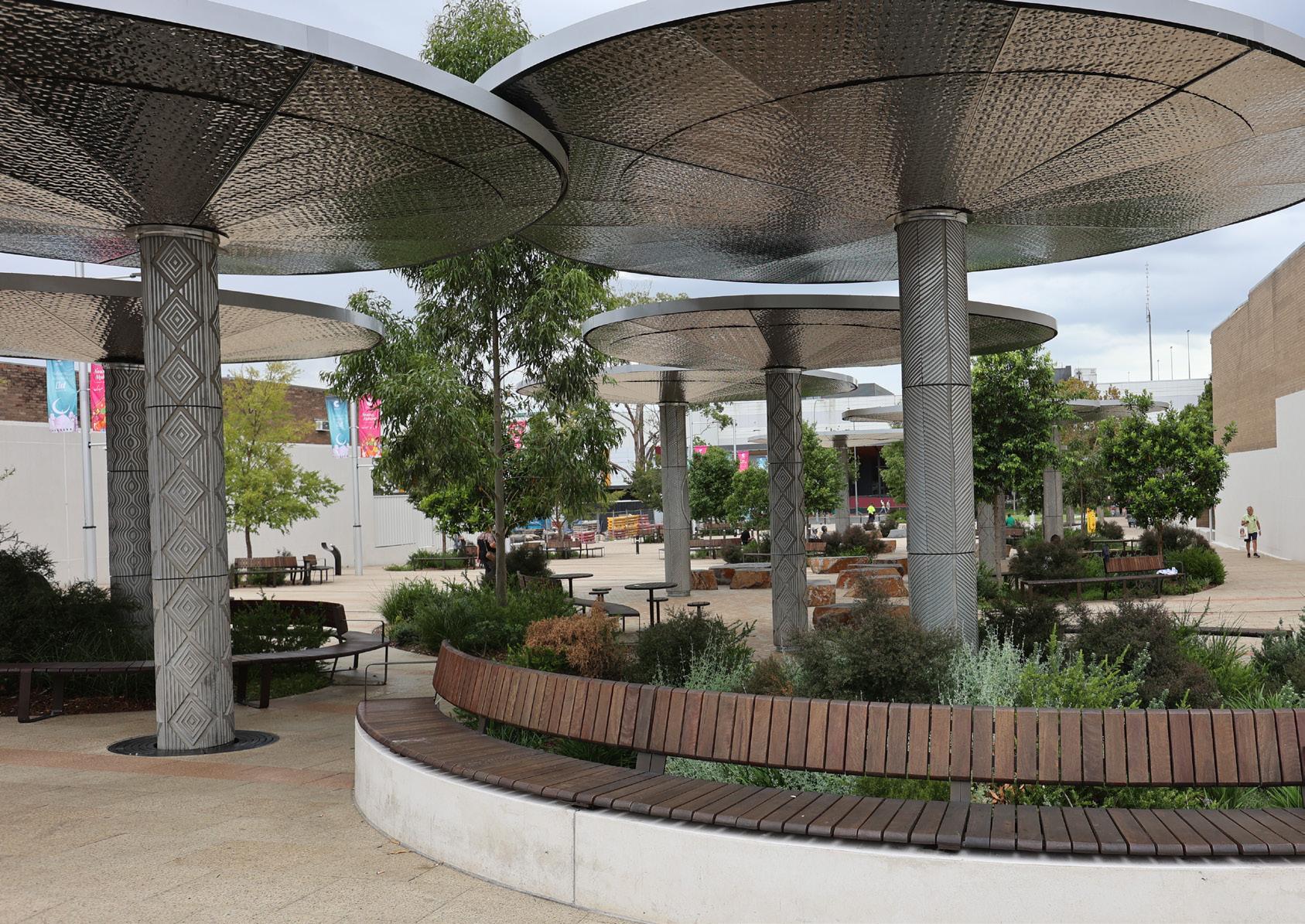
Interest in improved road safety, pedestrian crossings, more bus shelters and increased public transport options.
In 2035, Cumberland will be a liveable city enjoying natural offerings and diverse housing opportunities, leveraging its rich natural, built and cultural assets. Cumberland will maintain its local character and strong identity through heritage preservation and diverse economic offerings. Its amenity will be bolstered by people-centric infrastructure provisions, open space and public domain improvements, supported by leading environmental practices and strategies.
Better street lighting at intersections, enhanced shop fronts and smart tech to improve local services.
Focus on environmental management and protect natural spaces. Enhance recycling and composting options.
Support for mixed-use developments that minimise environmental impact and provide housing.
Design more parks, open spaces and kids’ play zones, along with providing shade over playgrounds.
Expand nightlife options and invest in lifestyle amenities, including better access to bars, restaurants, cafes and outdoor dining.
Address traffic and transport issues, including road capacity, traffic flow and the lack of car parking spaces.
Improve walking and cycling options with additional footpaths.
Need for expanded community facilities , libraries and additional sports and recreational infrastructure.
More community cleanup events and programs to maintain parks, waterways and habitats for wildlife like bees and birds.
Preserve and maintain historical buildings.
Emphasis on tree planting, greenery and preserving natural areas, with specific design considerations for women’s safety.
2.1
We celebrate our diverse built and natural environments
2.1.1
Prepare land use plans and controls that support population growth, provide diverse housing and employment options and value our local character and heritage
2.1.2
• Central City District Plan
• Development Contributions Practice Notes
• Government Architect NSW Policies and Frameworks
• Greater Sydney Region Plan – A Metropolis of Three Cities
• NSW Everyone Can Play A Guideline to Create Inclusive Playspaces
• NSW Government Smart Places Strategy and Playbook
• NSW Public Spaces Charter
• NSW Waste and Sustainable Materials Strategy 2041
• Parramatta River Catchment Group Masterplan
• Parramatta Road Urban Transformation Strategy
• Planning Agreements Practice Note
• Public Open Space Strategy for NSW
• State Environmental Planning Policies
• Western Sydney Regional Litter Prevention Plan 2023-2027
• Western Sydney Regional Waste and Sustainable Materials Strategy 2022-27
• WSROC Turn Down the Heat Strategy and Action Plan
2.2
We
and
2.1.3
Facilitate
2.2.3
• Academia and Industry
• Architects/Consultants
• Australian Government Agencies
• Certifiers
• Chambers of Commerce
• Committees
• Community Groups
• Crown Lands
• Developers
• Local Aboriginal Land Councils
• Local Businesses
• NSW State Government Agencies
• Parramatta River Catchment Group (PRCG)
• Property Owners
• Residents
• Resilient Sydney
• Western Sydney Regional Organisation of Councils (WSROC)
COUNCIL’S SUPPORTING STRATEGIES AND PLANS
• Affordable Housing Policy
• Affordable Housing Strategy
• Auburn Botanic Gardens Master Plan
• Biodiversity Strategy
• Community Engagement Policy
• Community Engagement Strategy
• Community Facilities Strategy 2019 – 2029
• Compliance and Enforcement Policy
• Council-related Development Application Conflict of Interest Policy
• Cumberland 2030: Our Local Strategic Planning Statement
• Cumberland Development Control Plan (DCP) 2021
• Cumberland Local Environmental Plan 2021
• Cumberland Local Infrastructure Contributions Plan
• Cumberland Local Shops Study
• Duck River Parklands Strategic Masterplan
• Employment and Innovation Lands Strategy 2019
• Engineering Services Policy
• Environmental Health Strategy
• Flood Risk Management Policy
• Ibis Management Plan
• Local Housing Strategy
• Mobile Food Vending Vehicle Policy
• Open Space and Recreation Strategy 2019-2029
• Outdoor Dining Policy
• Planning Agreements Policy
• Planning Proposal Notification Policy
• Plans of Management
• Prospect Pipeline Corridor Strategic Masterplan
• Public Domain Plans
• Reconciliation Action Plan (RAP)
• Sustainability Action Plan
• Urban Tree Strategy
• Walking and Cycling Strategy
• Waste and Resource Recovery Strategy
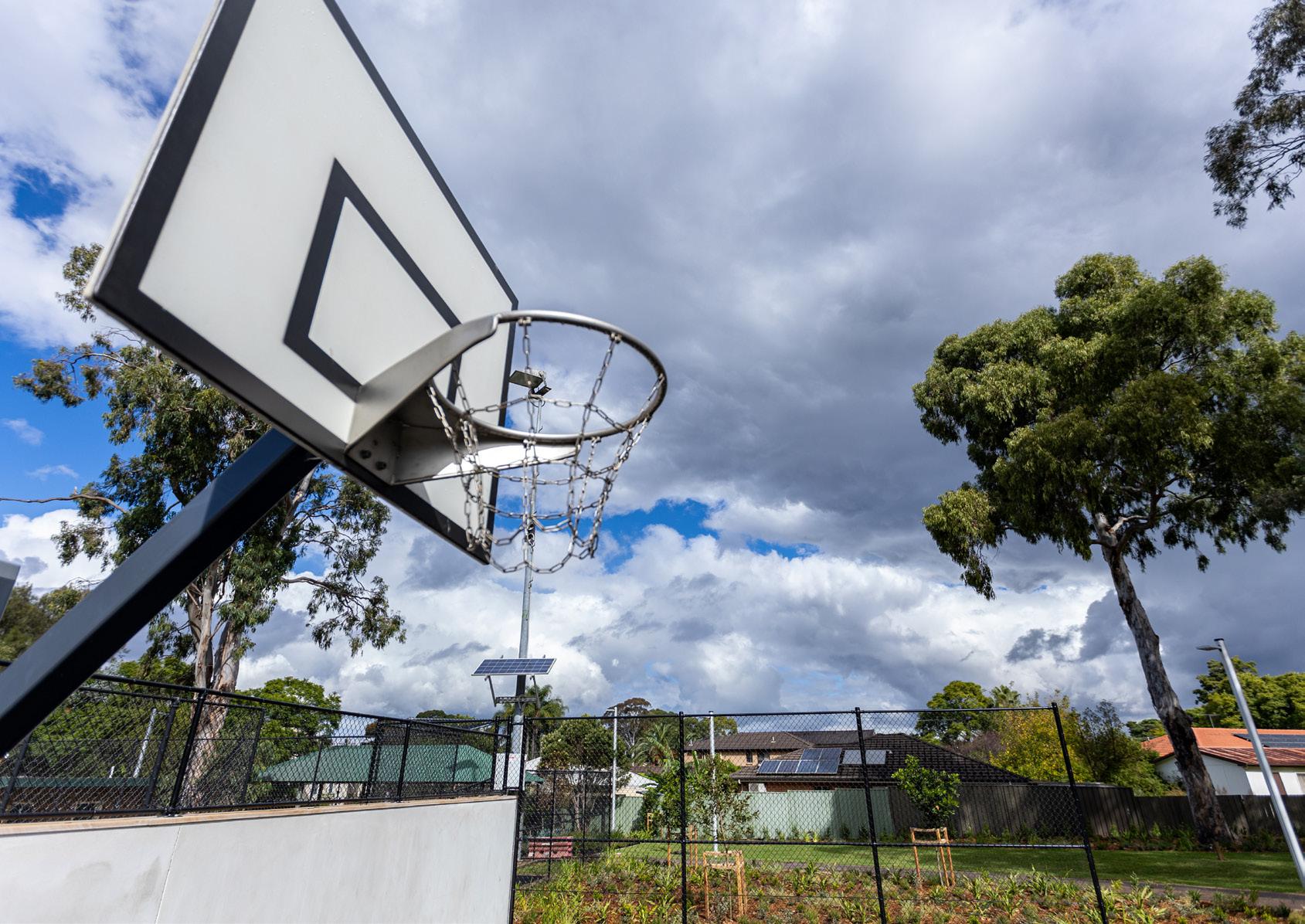
Demand for more swimming pools, indoor play areas for wet weather and waterparks.
Street lighting upgrade to improve sense of safety.
Prompt responsiveness to road repairs, waste management and city maintenance requests.
In 2035, Cumberland will have sustainably managed infrastructure assets and services that contribute positively to quality of life. Our infrastructure will meet our targets for a city that is safe, secure, clean, compliant, accessible and well connected to our wider region.
Impose strict penalties for illegal dumping and heavy vehicles parked in residential areas.
Building more public toilets, ensuring cleanliness and installing benches and bins for greater convenience.
Increase cleanup frequency to address litter and pollution, with better waste management and enforcement of littering fines.
Focus on road maintenance, improved stormwater systems and smarter, more efficient infrastructure.
More sport and leisure activities and recreational services.
and playgrounds.
Maintenance and beautification of existing green spaces with regular mowing and community gardens to share produce and compost food waste.
Providing sustainable infrastructure that meets the current and future generation needs.
Patrols of schools, illegal parking and managing lost and stray dogs and cats.
3.1
We have public spaces and recreational assets that are welcoming, liveable and promote pride in the area
Ensure our valued recreational spaces and venues are fit for purpose and encourage active lifestyles
and welcoming recreational initiatives, programs and services
• National Construction Code
• NSW Environment Protection Authority (EPA) Waste Avoidance and Resource Recovery Strategy 2014-2021
• NSW Environment Protection Authority (EPA) Waste Delivery Plan
• NSW Waste and Sustainable Materials Strategy 2041
• Regional and Local Roads Repair Program
• State Environmental Planning Policy (Exempt and Complying Development Codes) 2008
• State Environmental Planning Policy (Resilience and Hazards) 2021
• State Environmental Planning Policy (Transport and Infrastructure) 2021
• Tendering Guidelines for NSW Local Government
• Transport for NSW (TfNSW) Quality Standards and Specifications
• Western Sydney Regional Waste and Sustainable Materials Strategy 2022-27
COUNCIL’S SUPPORTING STRATEGIES AND PLANS
• Asset Management Strategy
• Biodiversity Strategy
• Code of Conduct
• Community Facilities Strategy 2019 – 2029
• Compliance and Enforcement Policy
• Cumberland Local Environmental Plan 2021
• Disability Inclusion Action Plan (DIAP)
• Fleet Management Policy
• Long Term Financial Plan
• Open Space and Recreation Strategy 2019-2029
• Property Policy
• Urban Tree Strategy
• Waste and Resource Recovery Strategy
• Workforce Management Strategy
and
• Animal Impounding Facilities
• Aquatic and Recreation Institute (ARI) NSW
• Australian Government Agencies
• Austswim
• Community and Business Groups
• Community Resources Limited
• Department of Infrastructure, Transport, Regional Development, Communication and the Arts
• Downer EDI
• Enforcement Technology Software Suppliers
• Fire and Rescue NSW
• Fitness Passport
• i-auditor
• Meals On Wheels Organisation
• NRL Eels
• NSW Department of Planning, Housing and Infrastructure
• NSW Food Authority
• NSW Health
• NSW National Parks and Wildlife Service
• NSW Rural Fire Services
• NSW State Government Agencies
• Office of Local Government (OLG)
• Residents
• Resource Recovery Australia
• Revenue NSW
• Royal Life Saving Australia
• Service NSW
• Transport for NSW
• United Resource Management
Environmental Services (URM) Pty Ltd

Focus on delivering efficient and better quality services.
In 2035, Cumberland will have strong leadership and fit for purpose governance that uses long term planning based on community engagement to drive positive change within the local community. There will be trust and accountability to and from the community and its leadership fostered by high quality communications and collective decision making.
More engagement and transparency from Council in decision-making.
Access to information on services, programs, events etc.
Support of local businesses, cultural and recreational events that reflect community priorities.
4.1
We are proud to be served by a sustainable, responsible and transparent organisation, underpinned by good governance
4.2
We make progressive decisions, building a culture of sustainable innovation, excellence and safety
4.1.1
Build public trust in local leadership and embed a culture of governance and probity in Council's processes and services
4.1.2
Operate in a financially responsible manner to deliver services and facilities that offer value for money and create economic growth ensuring long term sustainability
4.1.3
Attract and retain local talent to position Council as an employer of choice
Drive and implement continuous service excellence and business improvement through robust work practices and reviews
4.2.2
Ensure sustainability through innovative, efficient and effective technology practices
4.2.3
Foster a culture of wellbeing, learning and safety
4.3
We are well informed, engaged and included in decision making and long term planning and have easy access to Council
Effectively communicate and engage with the community about services, programs and offerings
Empower community involvement in decision making initiatives to drive a collaborative approach for long term planning
in
Provide equitable access to information and data to help make
• Councillor Handbook Office of Local Government
• General retention and disposal authority: local government records
• Greater Sydney Region Plan –A Metropolis of Three Cities
• Integrated Planning and Reporting Framework
• Integrated Planning and Reporting Guidelines
• Integrated Planning and Reporting Handbook
• Local Government Code of Accounting Practice and Financial Reporting
• Model Code of Conduct for Local Councils in NSW
• Model Code of Meeting Practice for Local Councils in NSW
• Model Councillor and Staff Interaction Policy
• NSW Foundation Spatial Data Framework
• Our Greater Sydney 2056 Central City District Plan
• SafeWork NSW Codes of Practice
• Tendering Guidelines for NSW Local Government
• Audit, Risk and Improvement Committee (ARIC)
• Audit Office of NSW
• Australian Disability Network
• Australian Government Agencies
• Civic Risk Mutual
• Community and Business Groups
• Department of Home Affairs
• Electoral Commission
• InConsult
• Information Privacy Commissioner
• Media Outlets
• Office of Local Government
• NSW Police
• NSW State Government Agencies
• Residents
• SafeWork NSW
• StateCover
• The NSW Office of the Valuer General
COUNCIL’S SUPPORTING STRATEGIES AND PLANS
• Asset Management Strategy
• Code of Conduct
• Code of Meeting Practice
• Community Engagement Policy
• Community Engagement Strategy
• Compliments and Complaints Management Policy
• Construction Bonds Management Policy
• Corporate Planning and Reporting Strategy
• Councillor and Staff Interaction Policy
• Councillor Expenses and Facilities Policy
• Crisis Communications Strategy
• Cumberland 2030: Our Local Strategic Planning Statement
• Cumberland Local Environmental Plan 2021
• Customer Experience Strategy
• Cyber Security Strategy 2024 - 2028
• Digital Strategy
• Disability Inclusion Action Plan (DIAP)
• Dividing Fences Hardship Policy
• Fees and Charges
• Financial Planning and Sustainability Policy
• Fraud and Corruption Control Policy
• Good Governance Guide
• Goods on Display Policy
• Governance Framework
• Investment Policy
• Large Display Advertising Policy
• Long Term Financial Plan
• Media Policy
• Outdoor Dining Policy
• Pensioner Rebate Policy
• Performance Indicator and Reporting Strategy
• Privacy Management Plan
• Property Policy
• Resourcing Strategy
• Risk Management Policy
• Social Media Policy
• Workforce Management Strategy
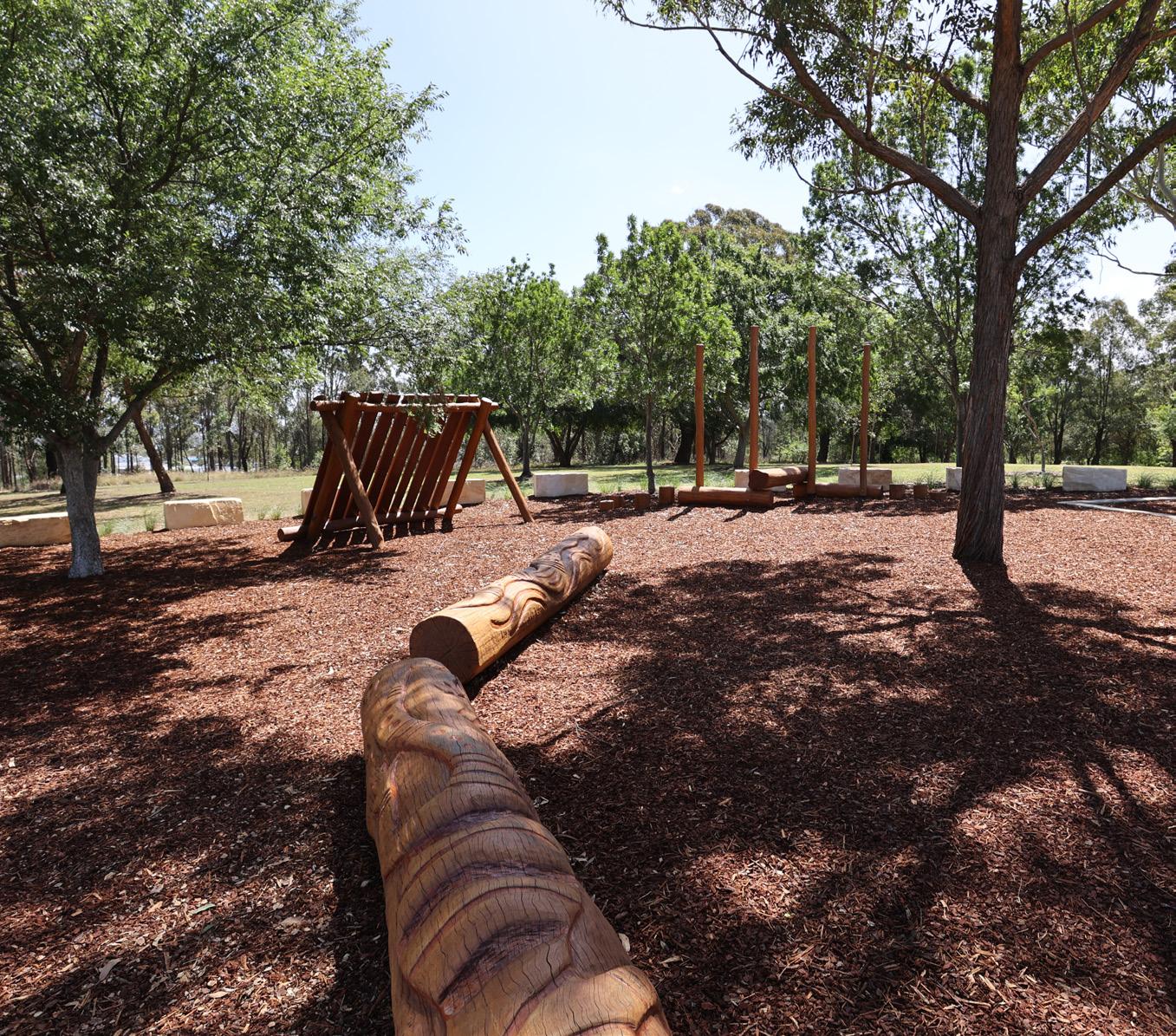
In response to the long term vision and strategic directions, objectives and strategies within this Community Strategic Plan (CSP), Council will adopt a four-year Delivery Program (DP). This will outline the focus areas for the four-year term and how Council plans to contribute to achieving the directions of the CSP over that period. The DP translates the high-level components in the CSP into principal deliverables that Council is committing to deliver.
An Operational Plan (OP) is developed annually, identifying the principal deliverables and actions that Council will undertake for each year of the DP.
Council’s Resourcing Strategy integrates Council’s asset, workforce, digital and financial planning to provide the community with clear and detailed information on how Council plans to sustainably resource the commitments it has made in the DP and OP.
Success of the CSP will be evaluated by tracking the CSP Indicators, under each strategic direction. Council undertakes a biennial Wellbeing Survey, providing insight into what the community values and how the community rates their lived experience of Cumberland.
Council also measures progress through a suite of IP&R reports as outlined below.
Performance towards achieving the vision and strategic directions of the CSP is assessed using a combination of methods across social, environmental, economic and civic leadership perspectives. This includes data from the Wellbeing Survey and other external sources, providing insight into progress towards or away from the four strategic directions that support the community’s overarching vision.
The CSP will then be reviewed and updated following the completion of this Council term to ensure it remains responsive to changing circumstances of Cumberland.
of our City Report
Evaluates progress against the Community Strategic Plan objectives and published at the end of each Council term.
Consolidates Council’s achievements, statutory requirements and financial performance in delivering on commitments outlined in the Delivery Program and Operational Plan.
Provides a six-monthly update to the community on the performance and progress of the specific actions outlined in the Operational Plan.

